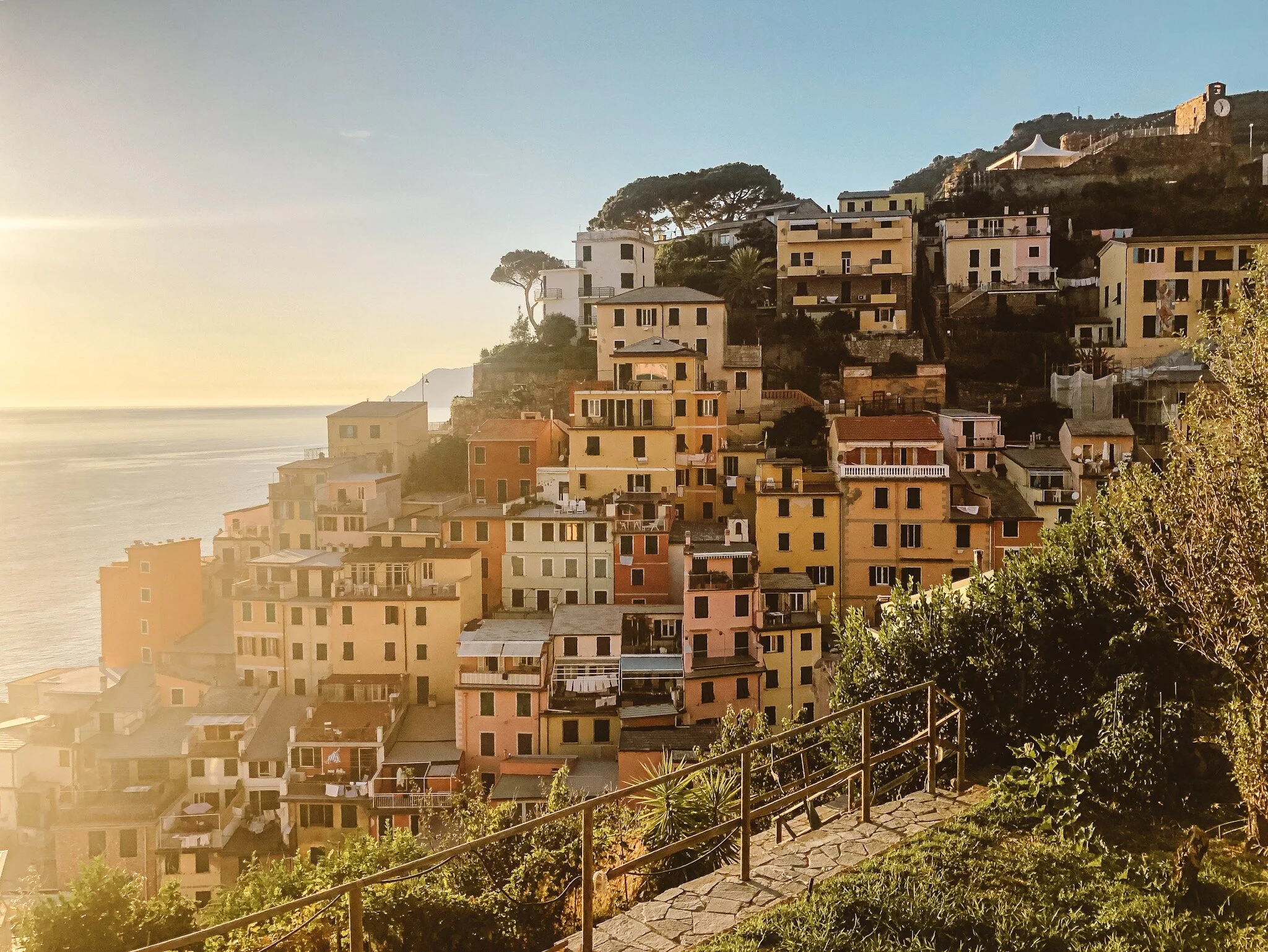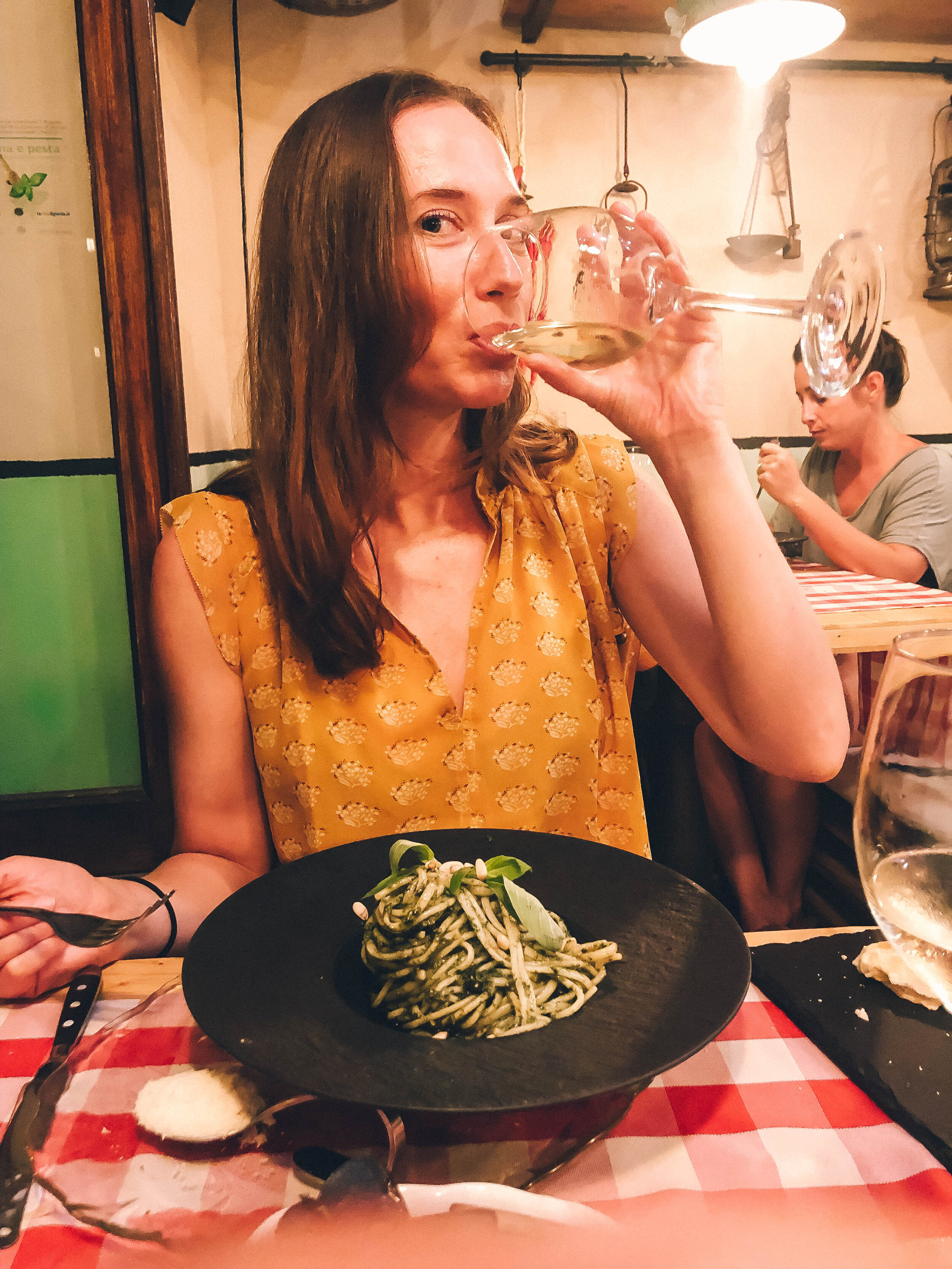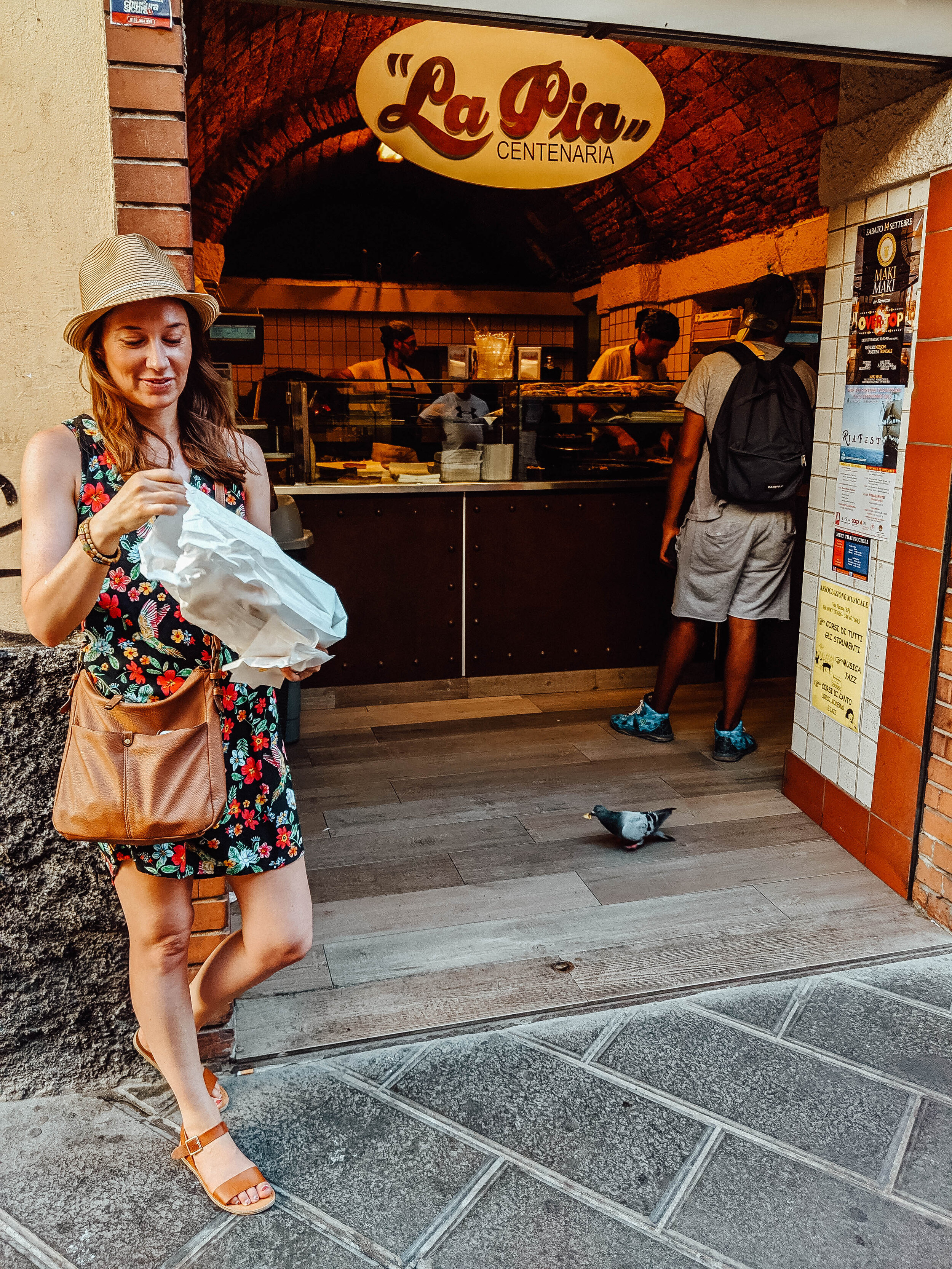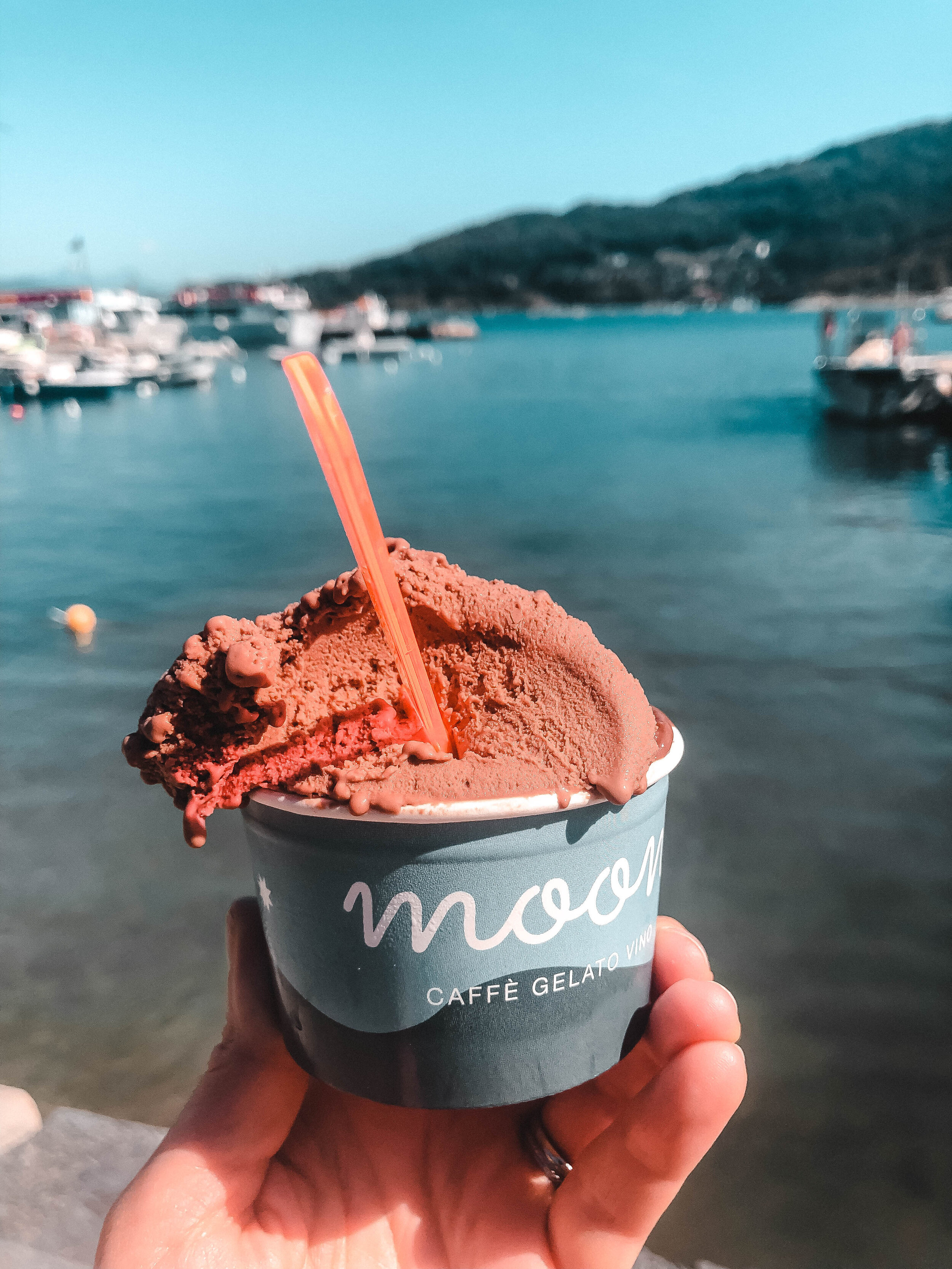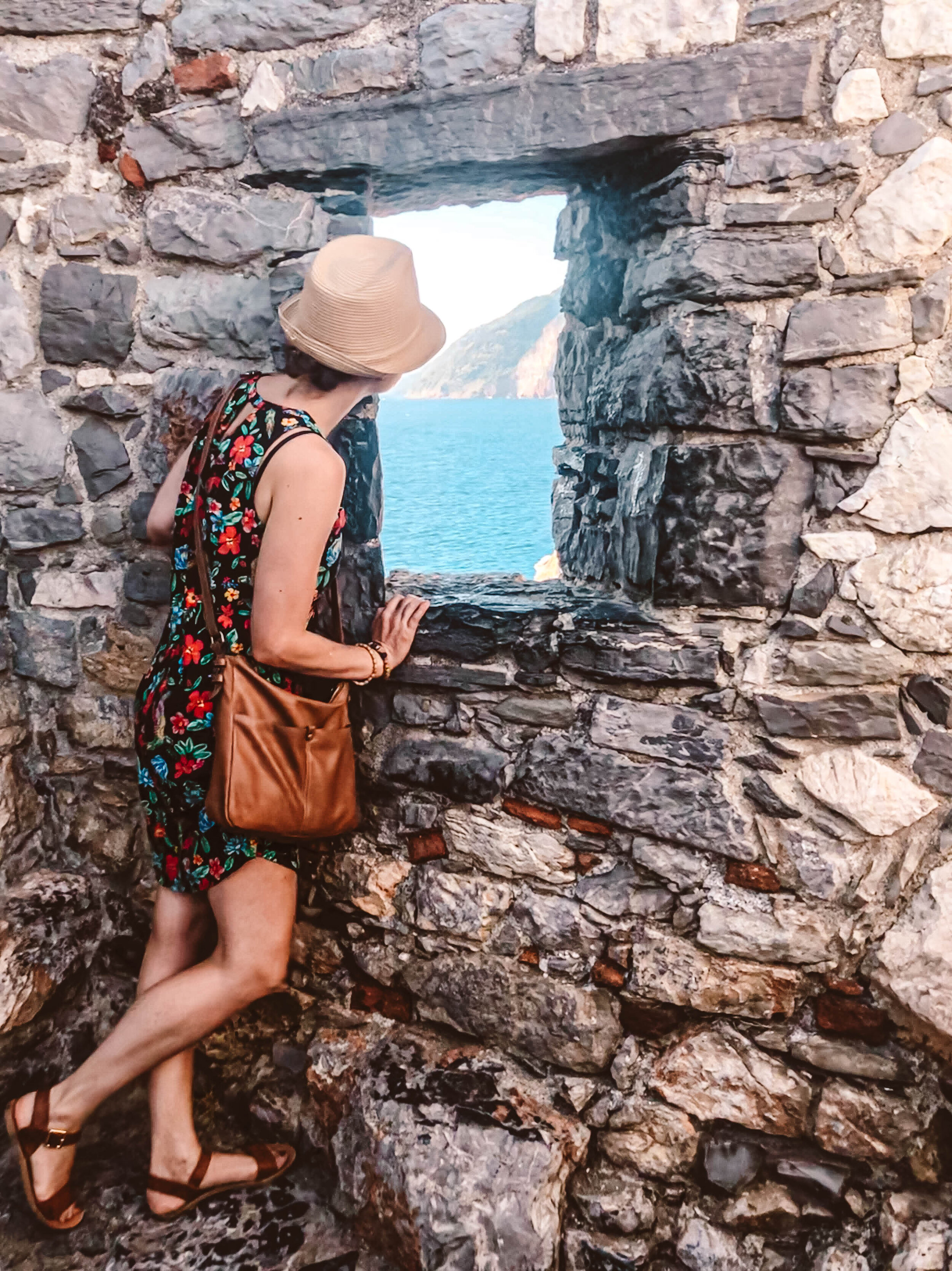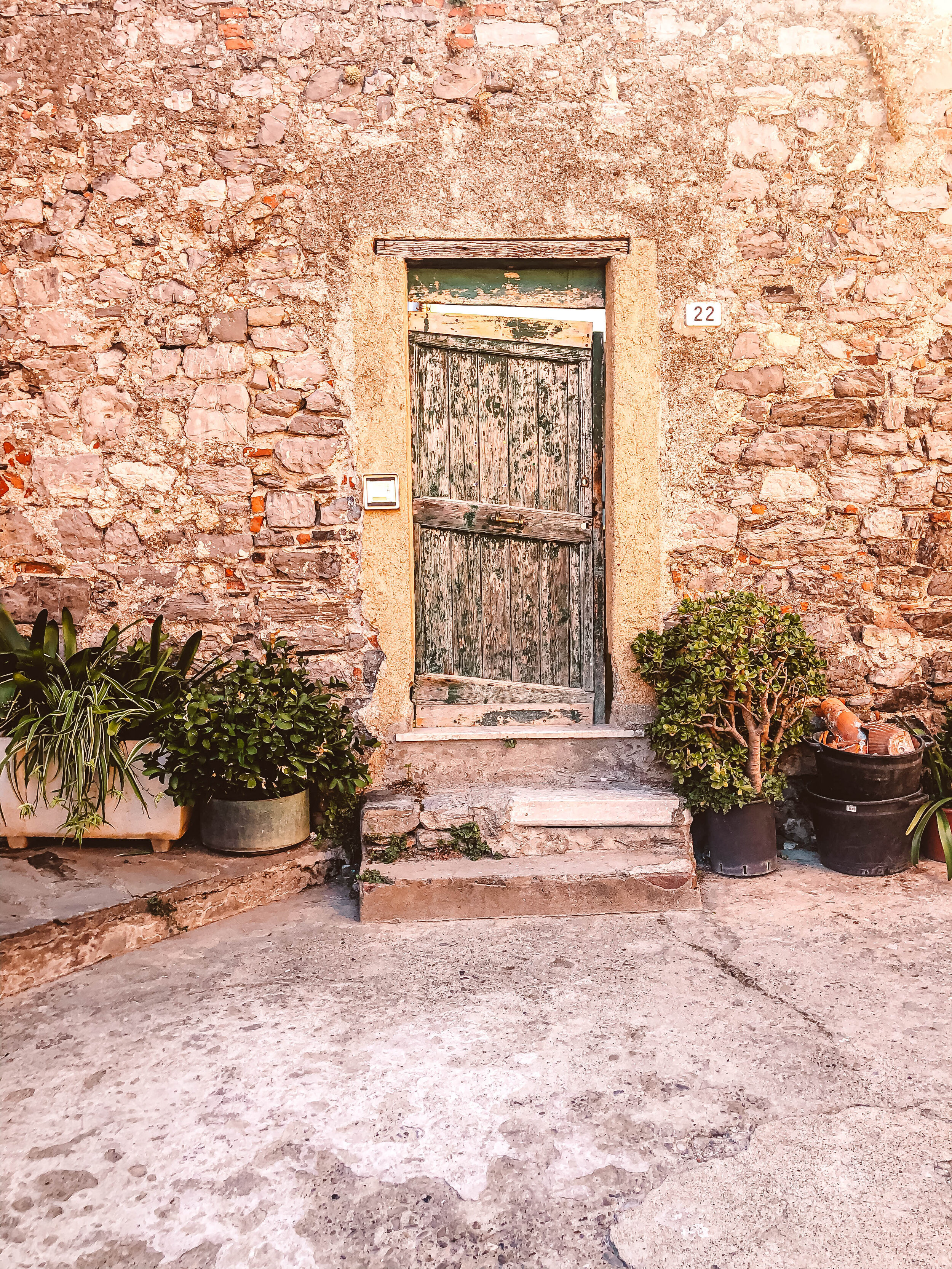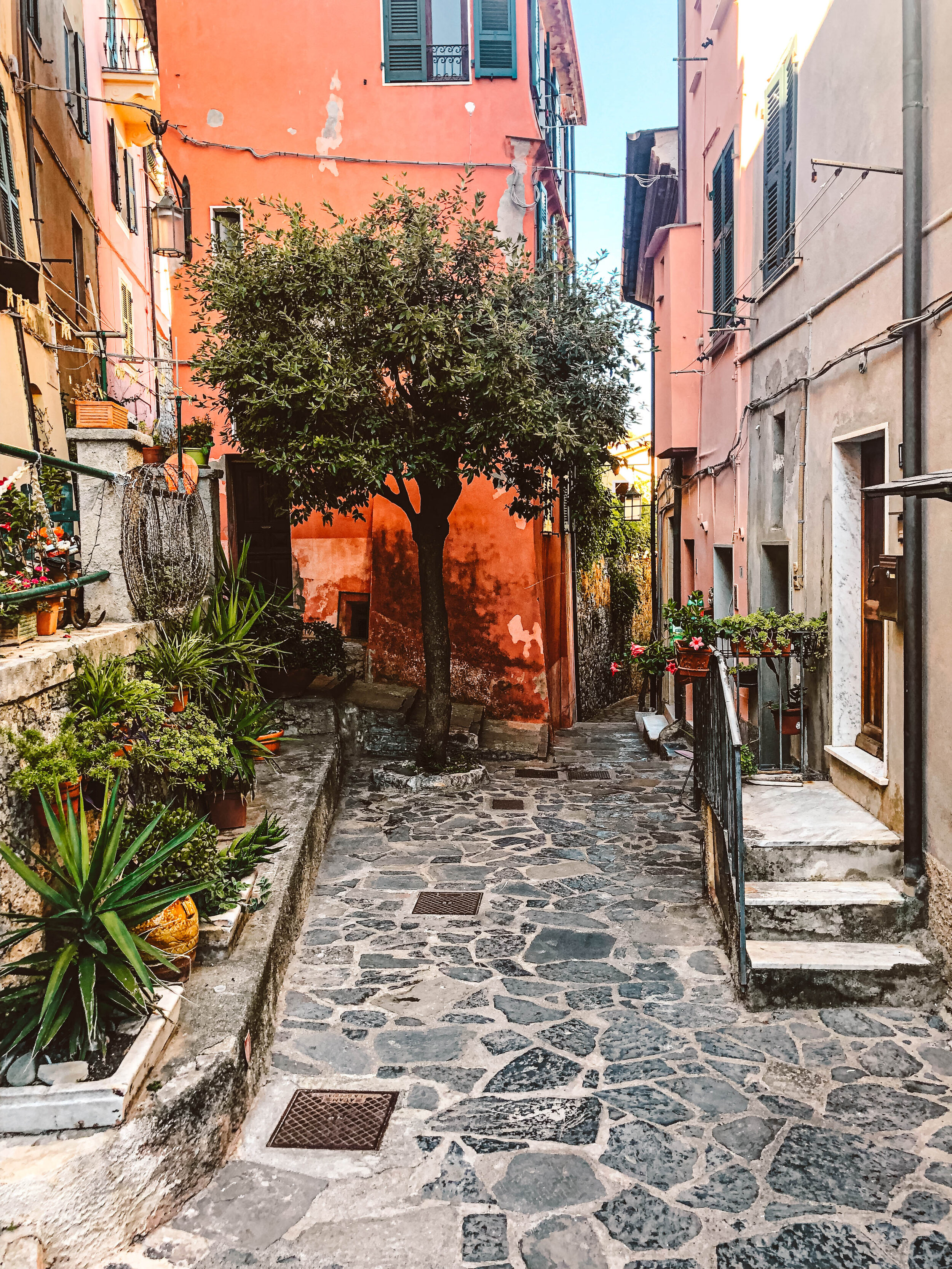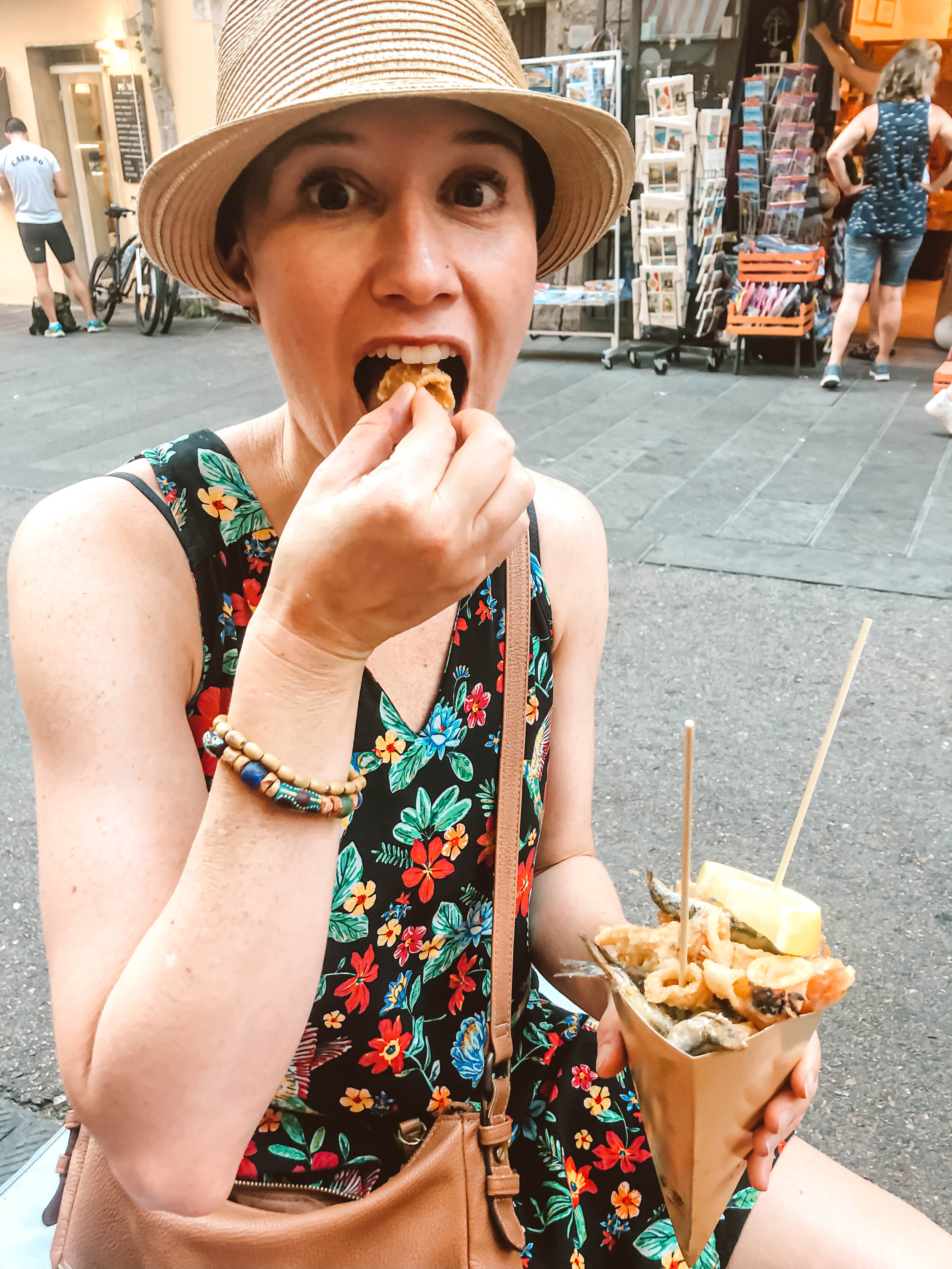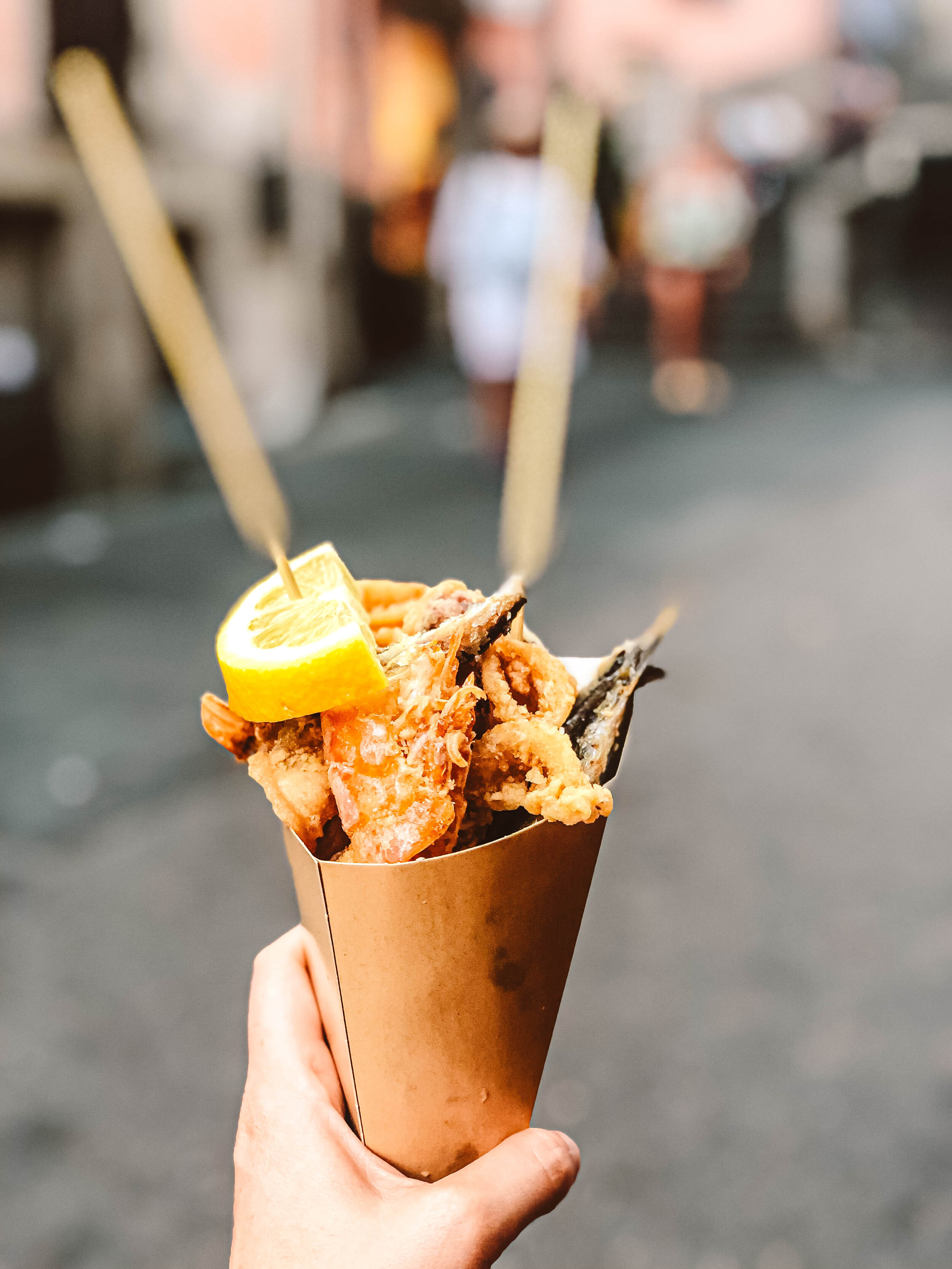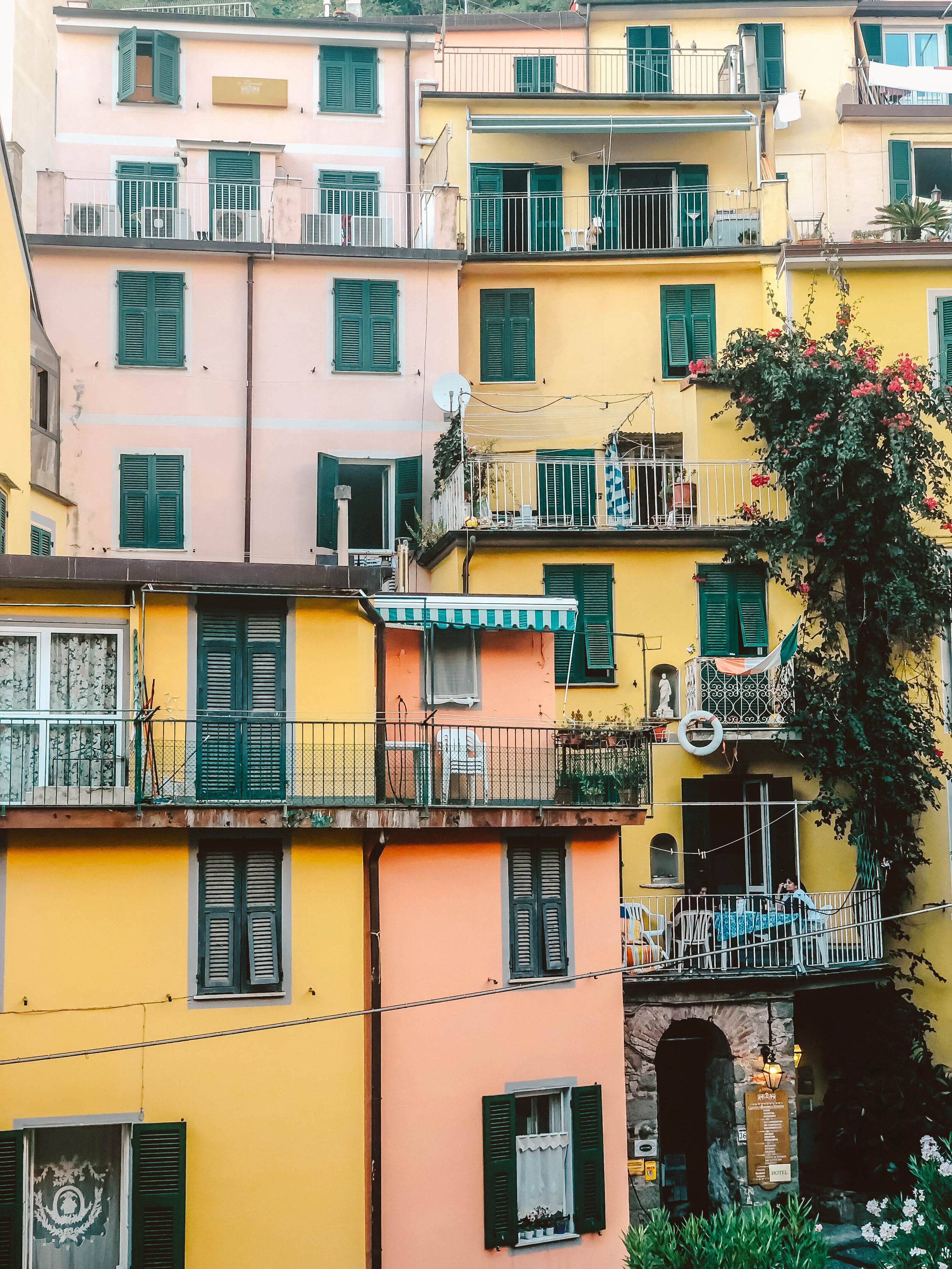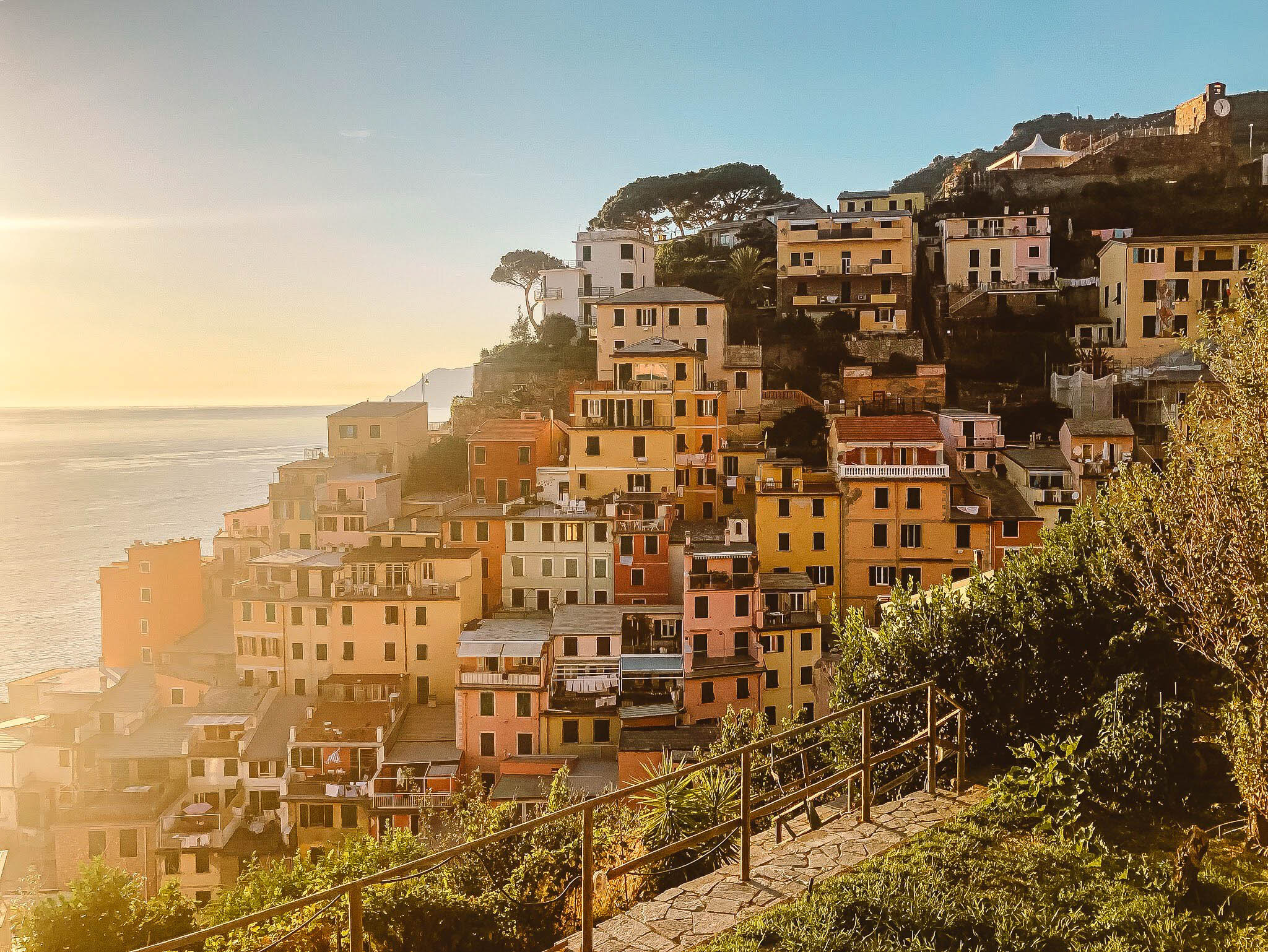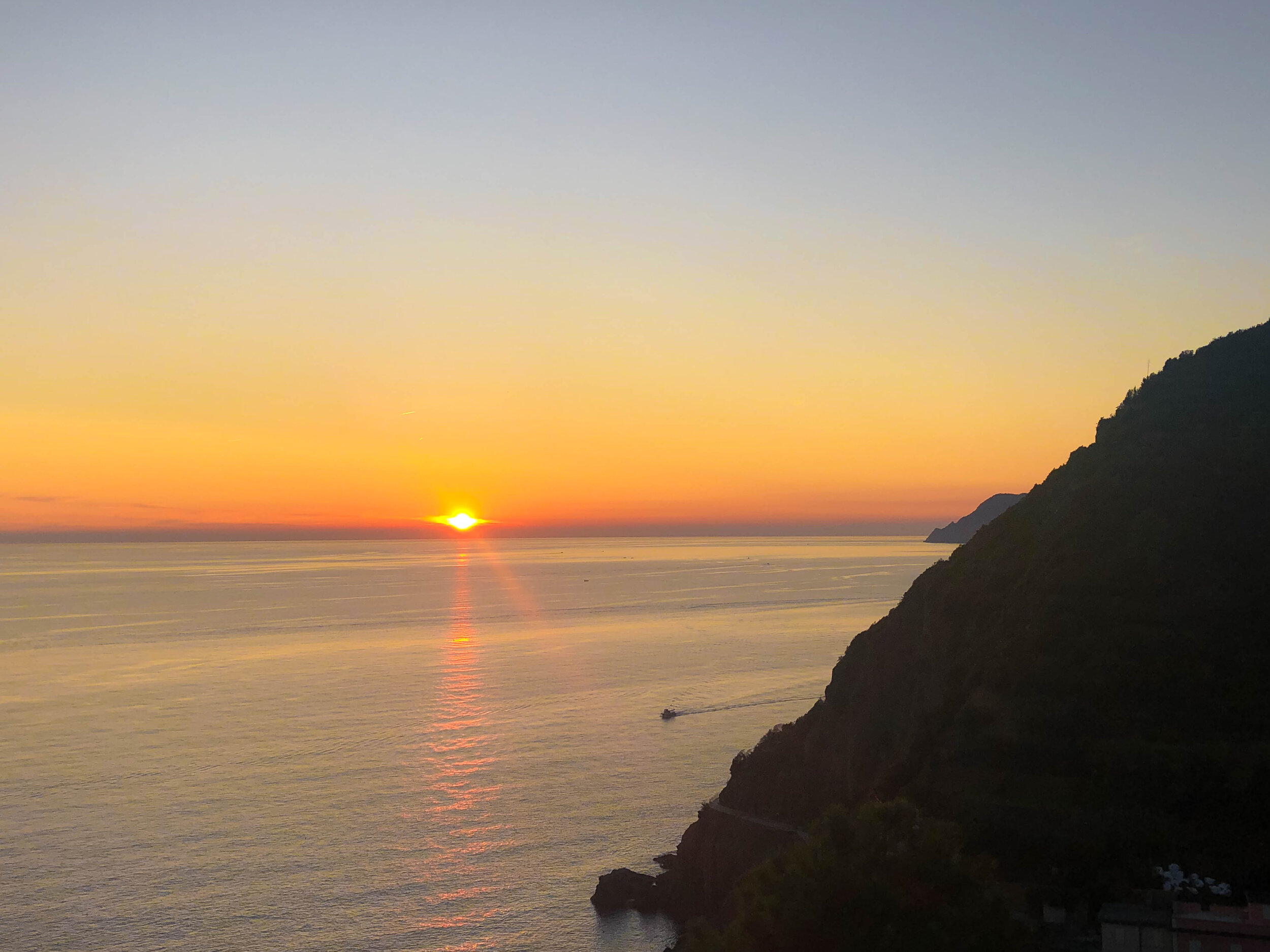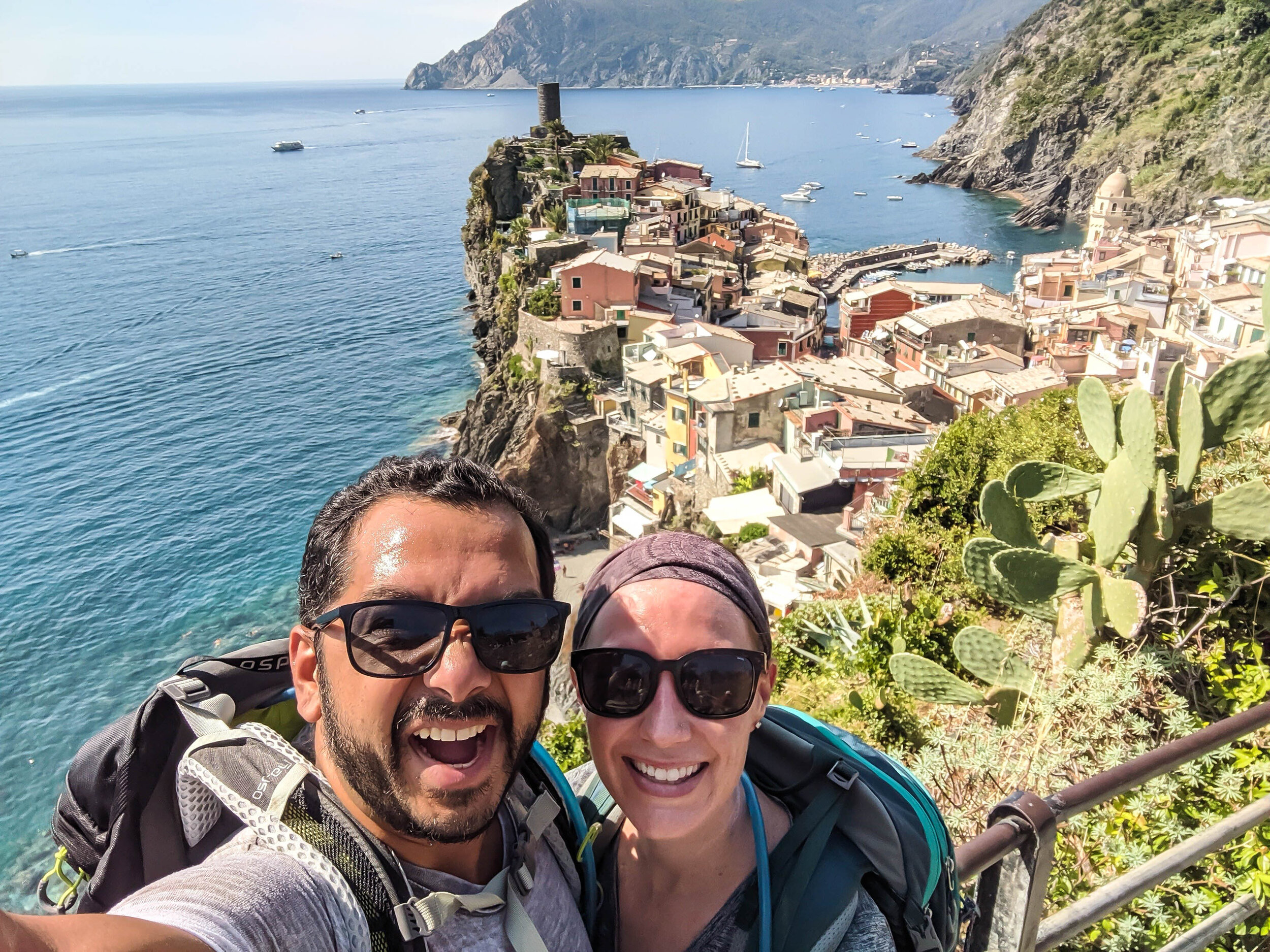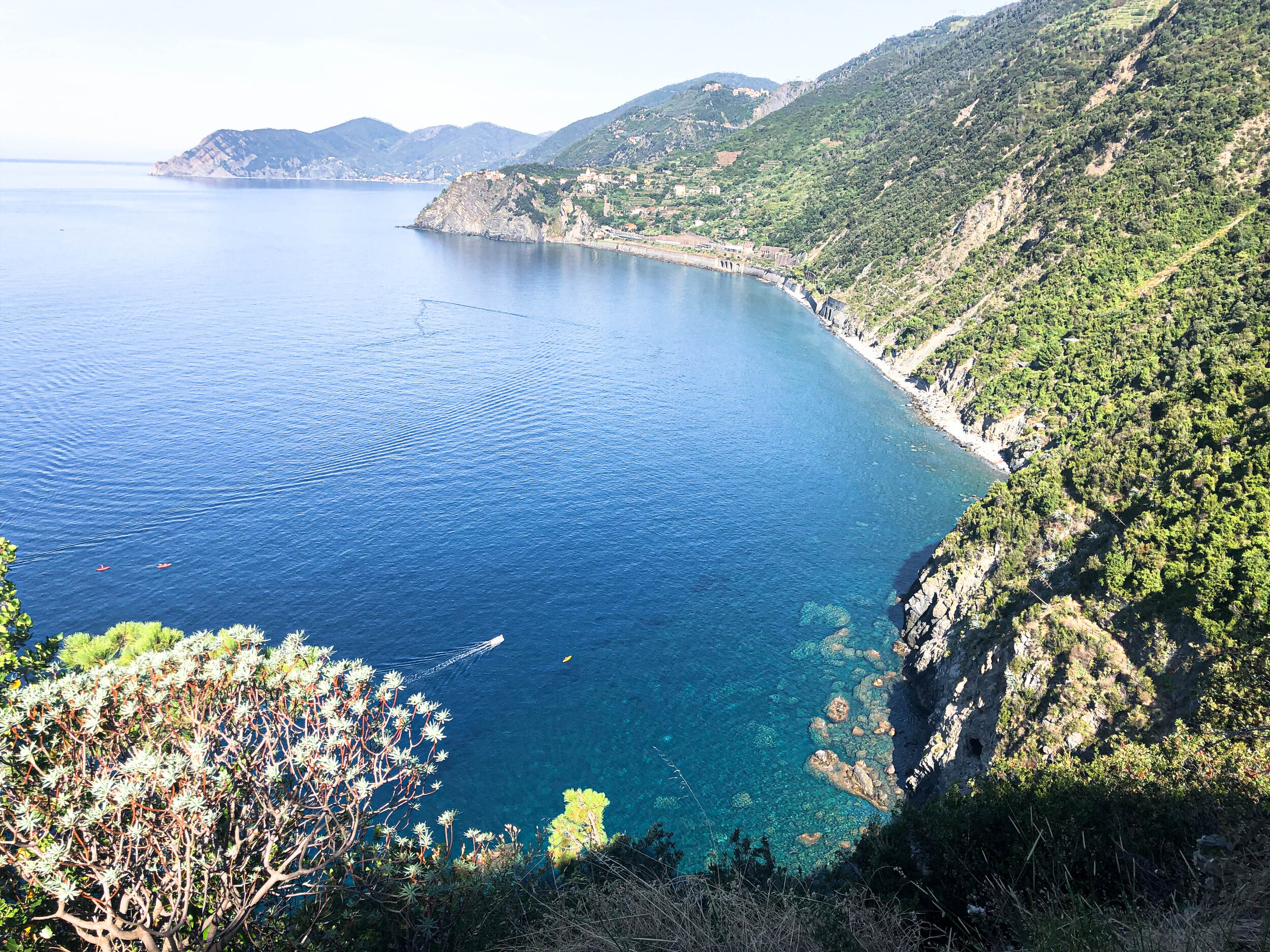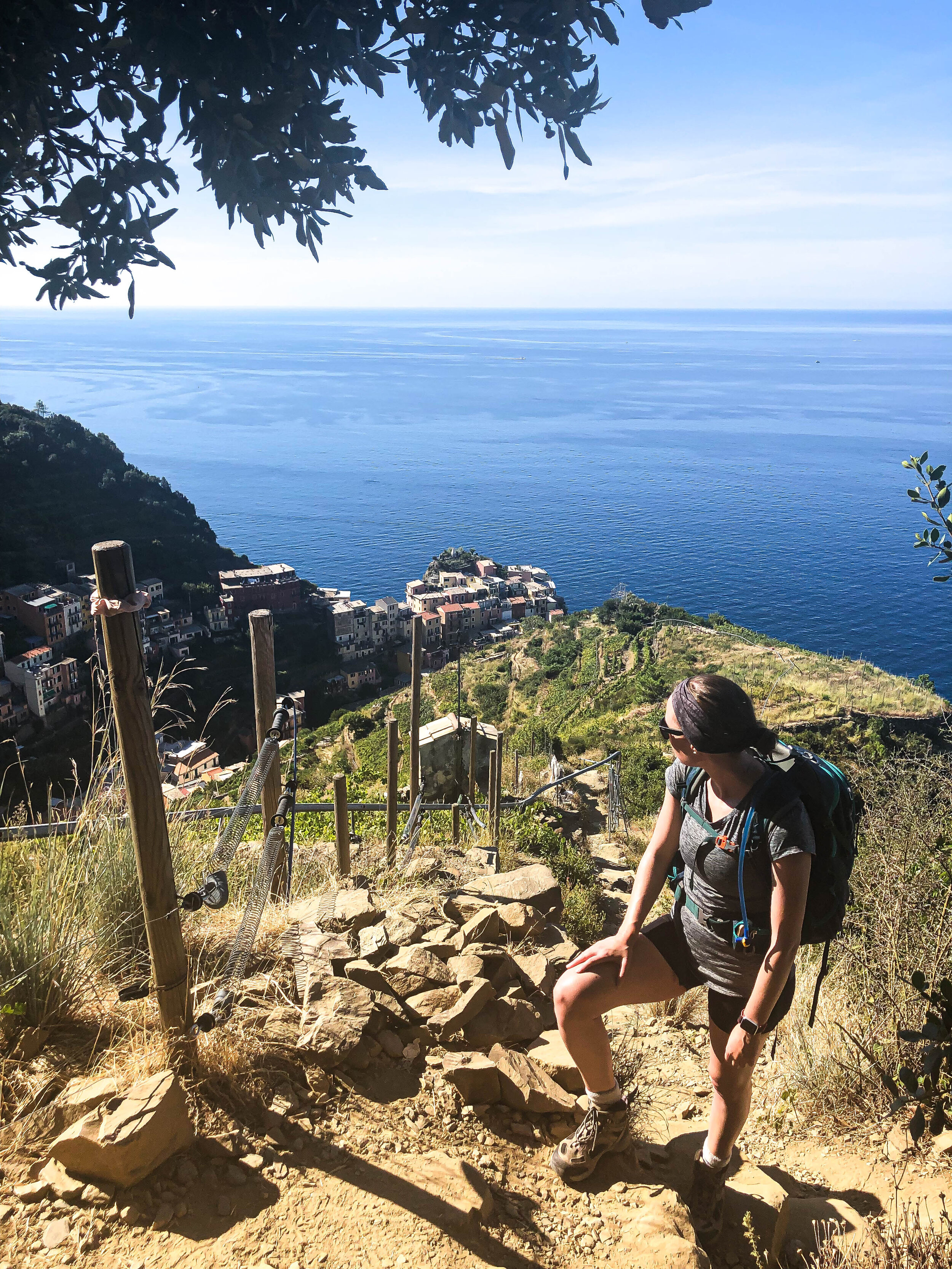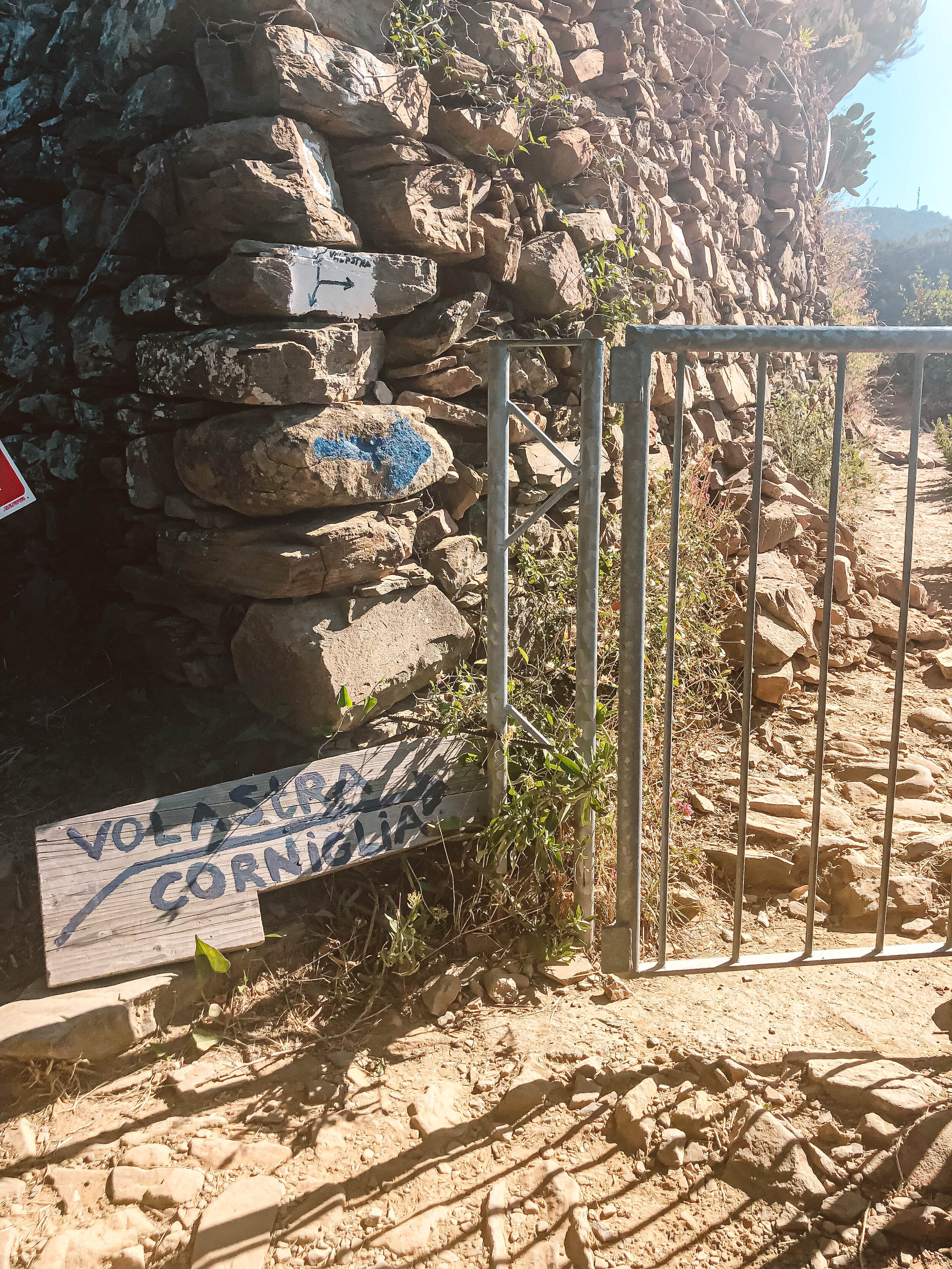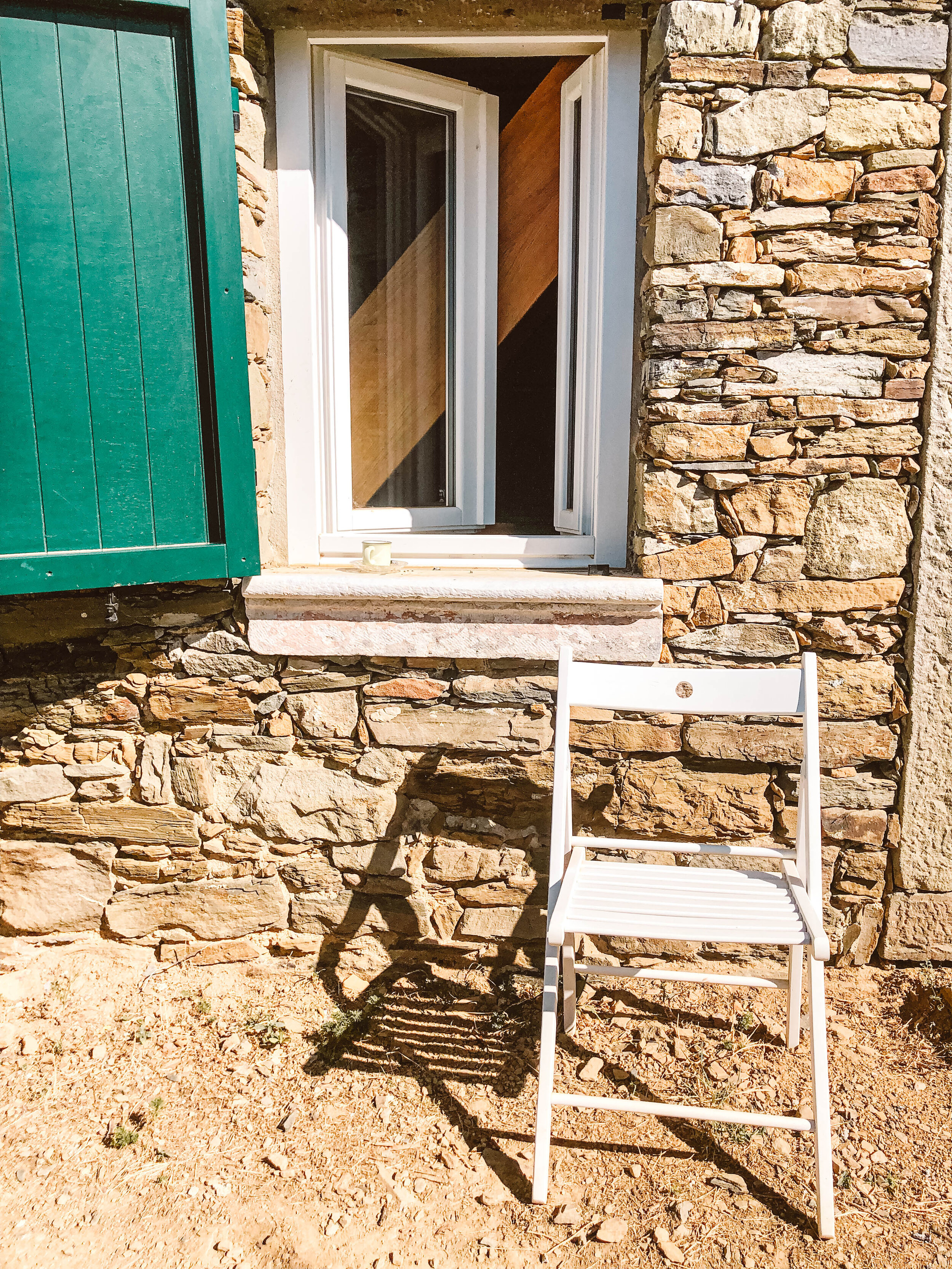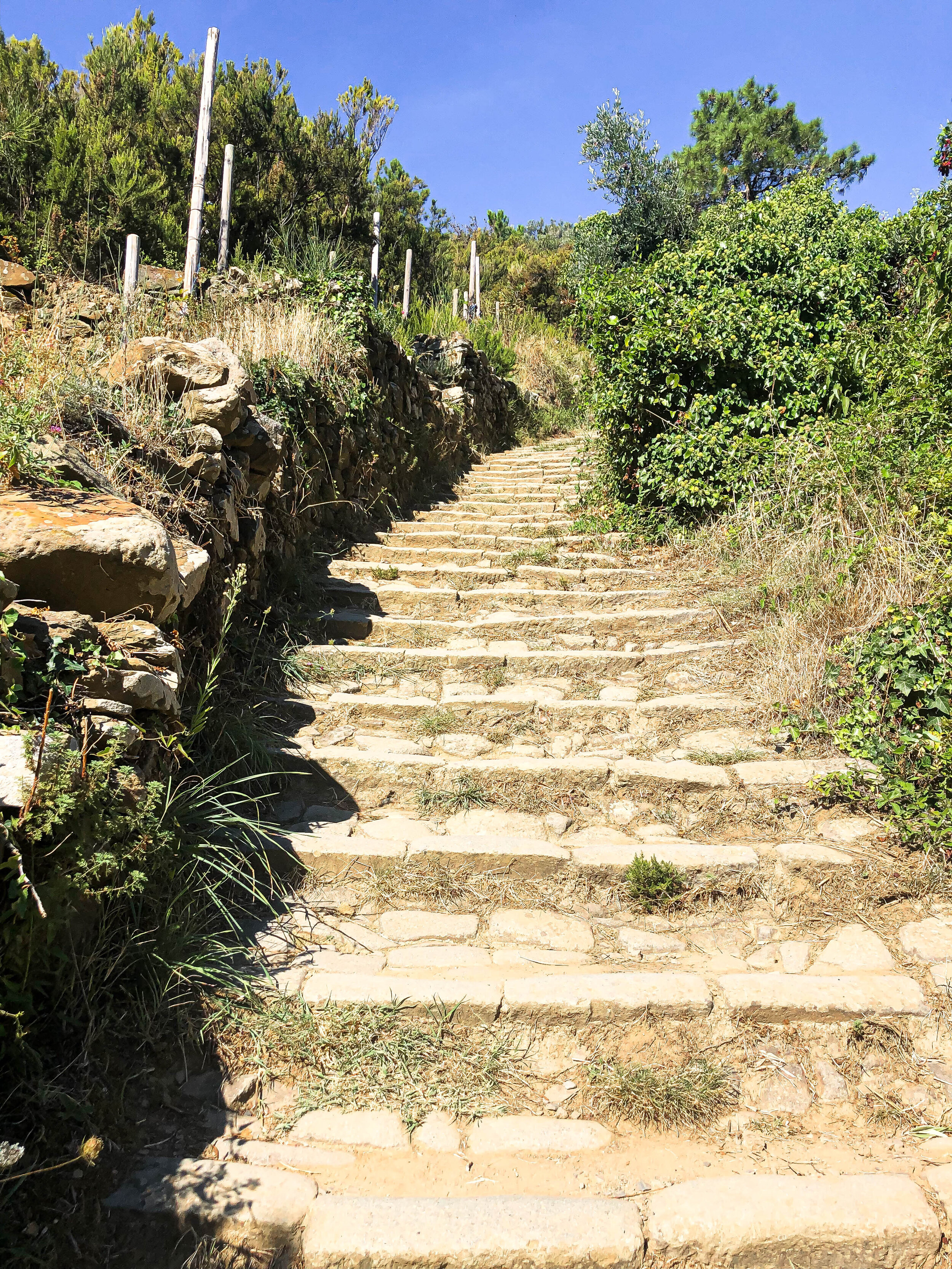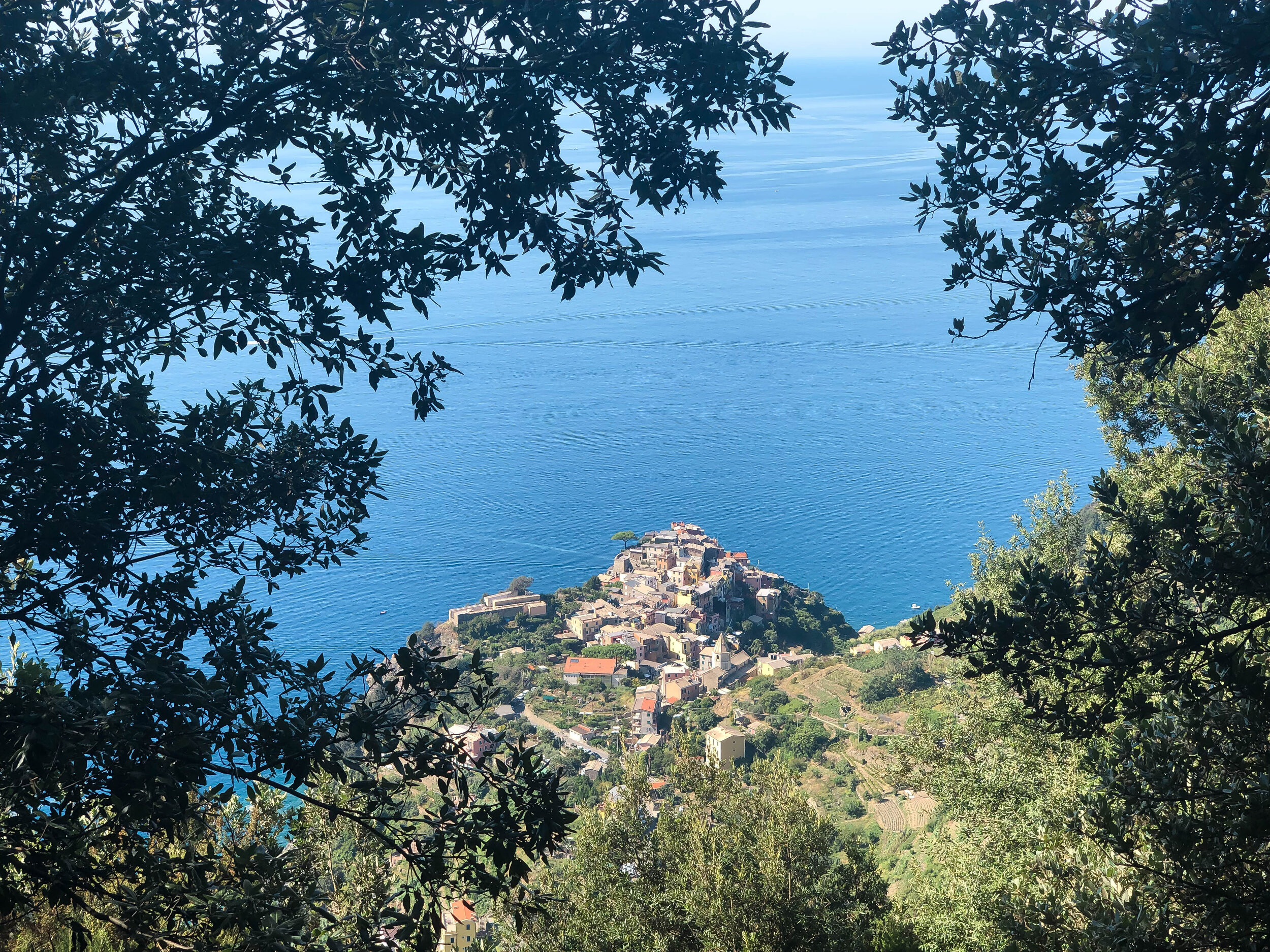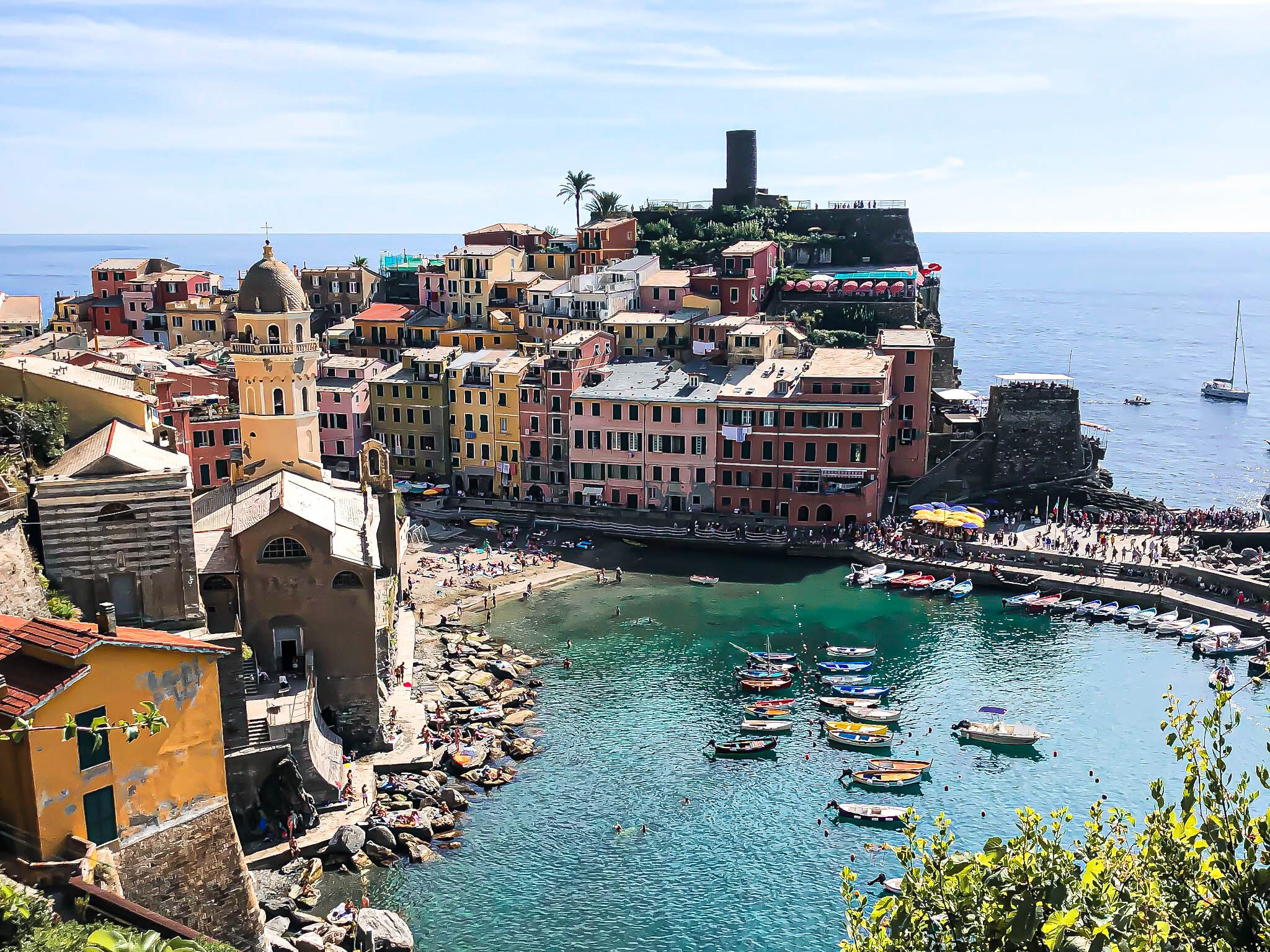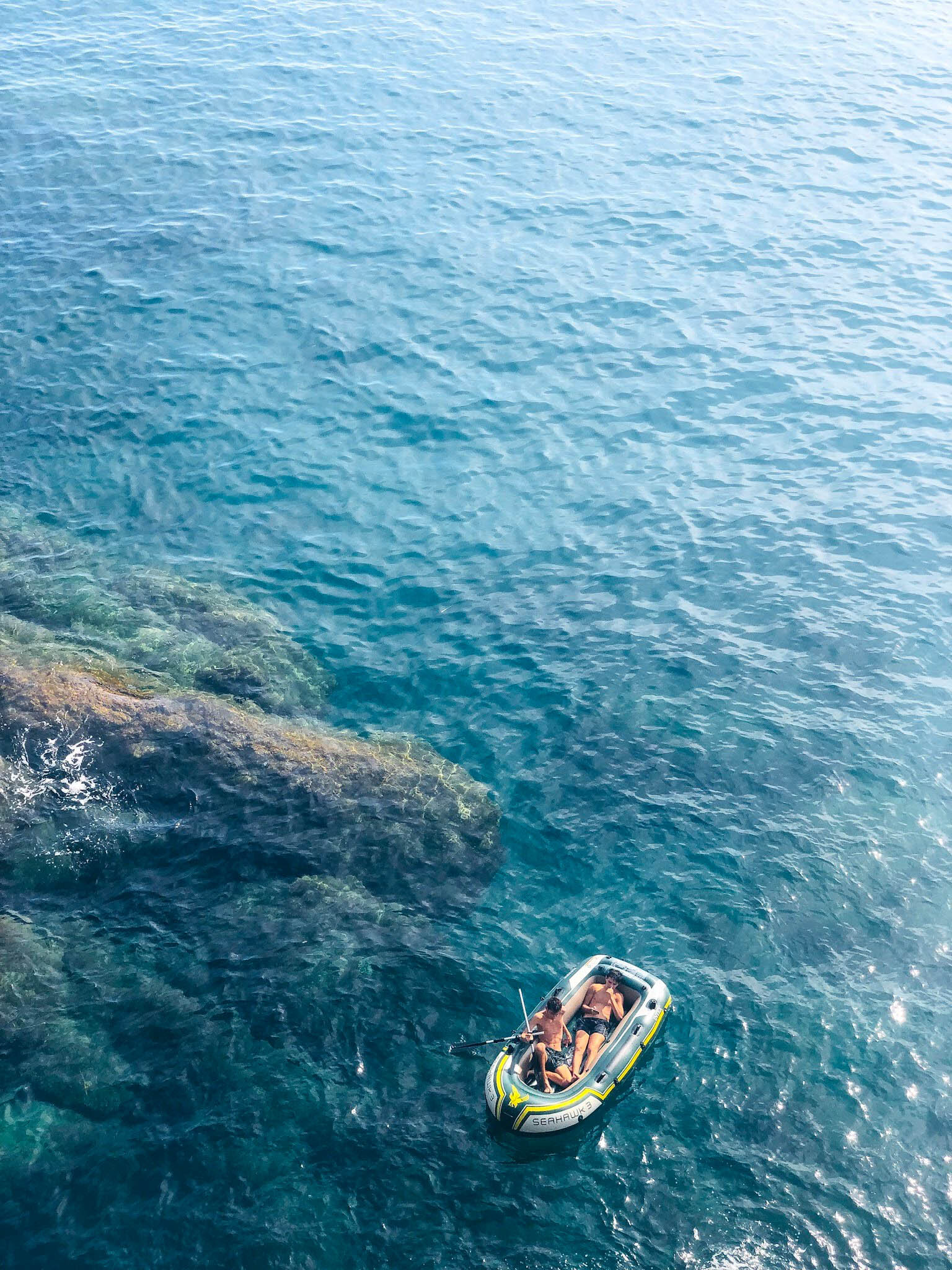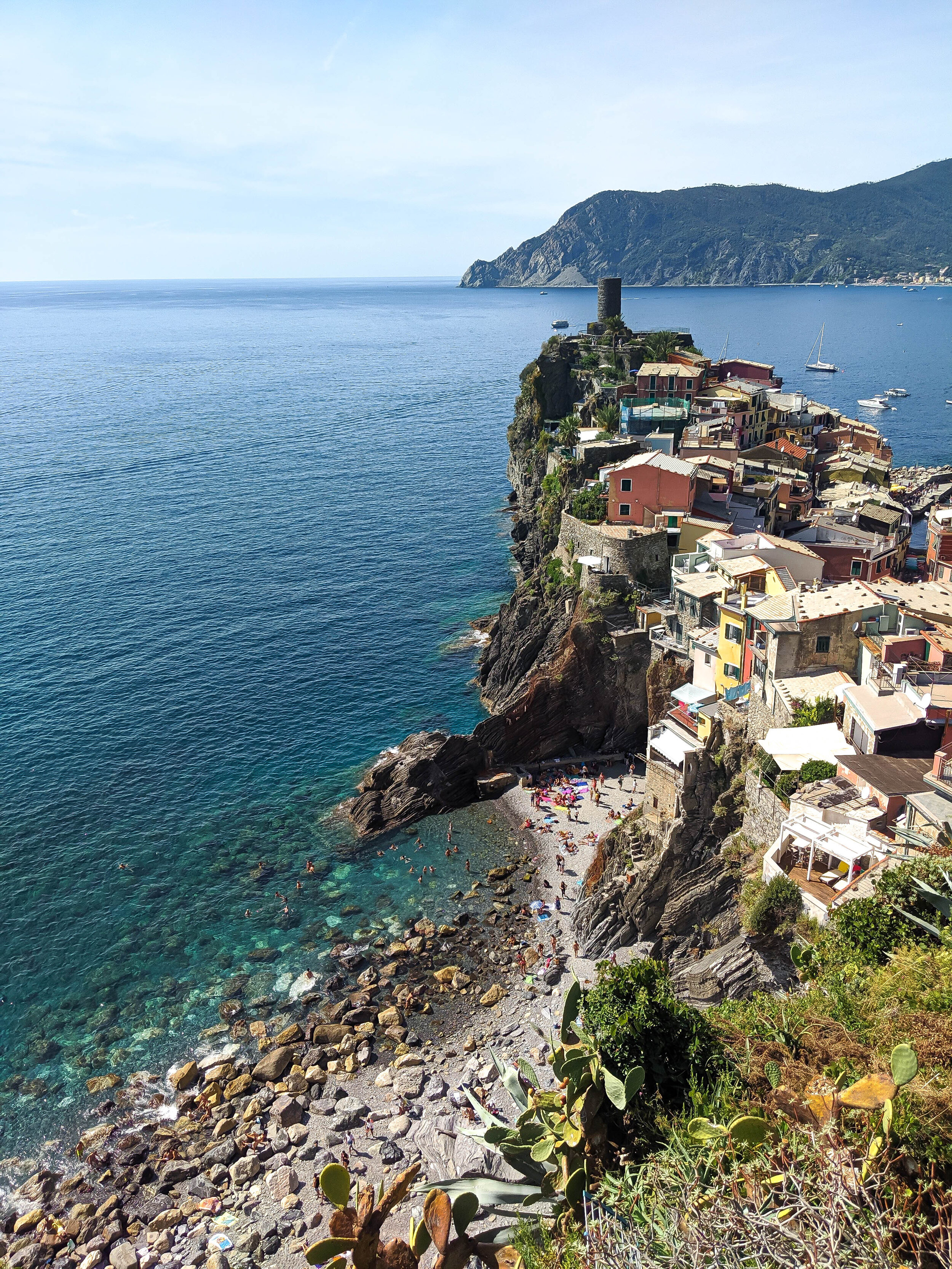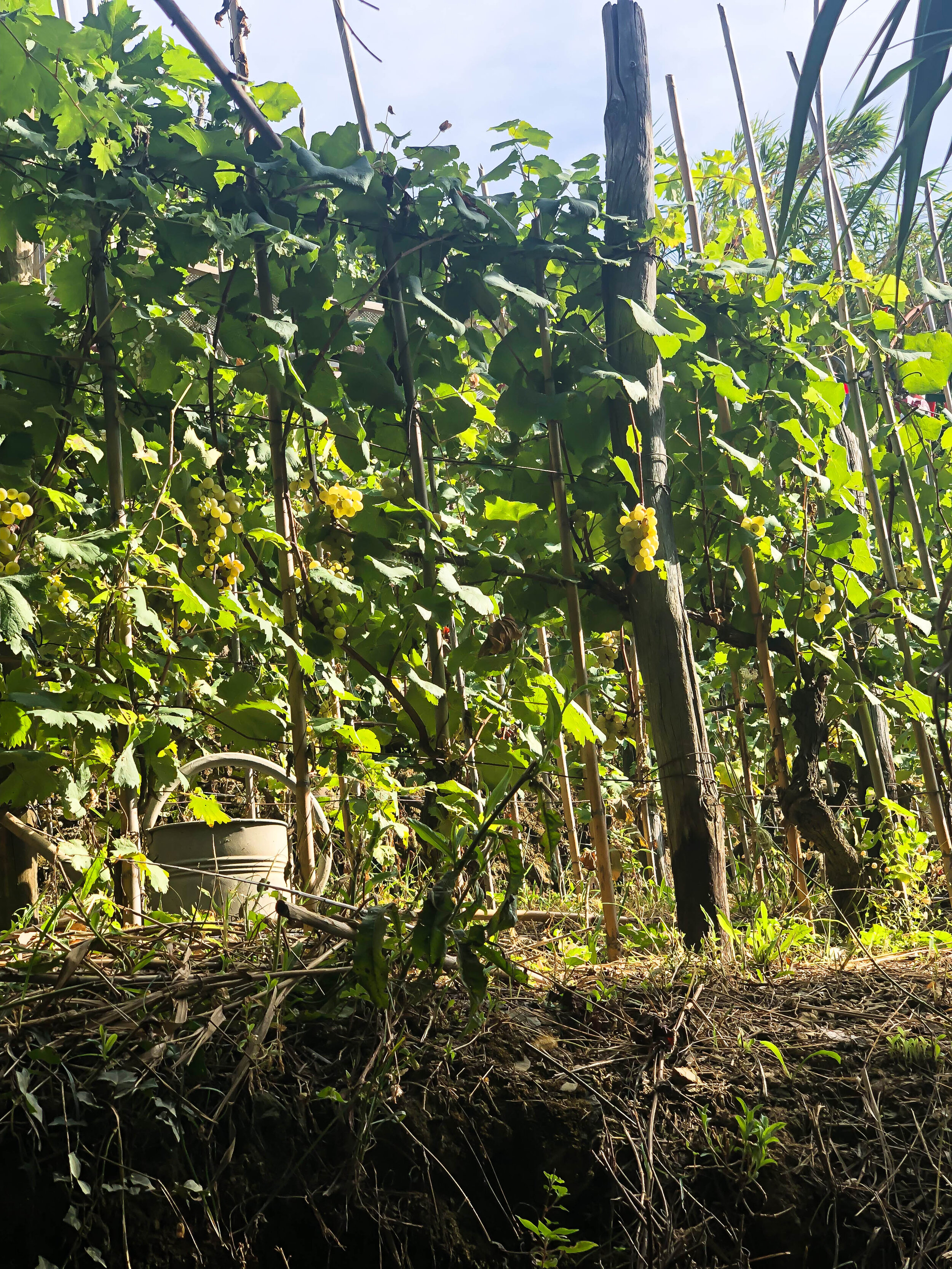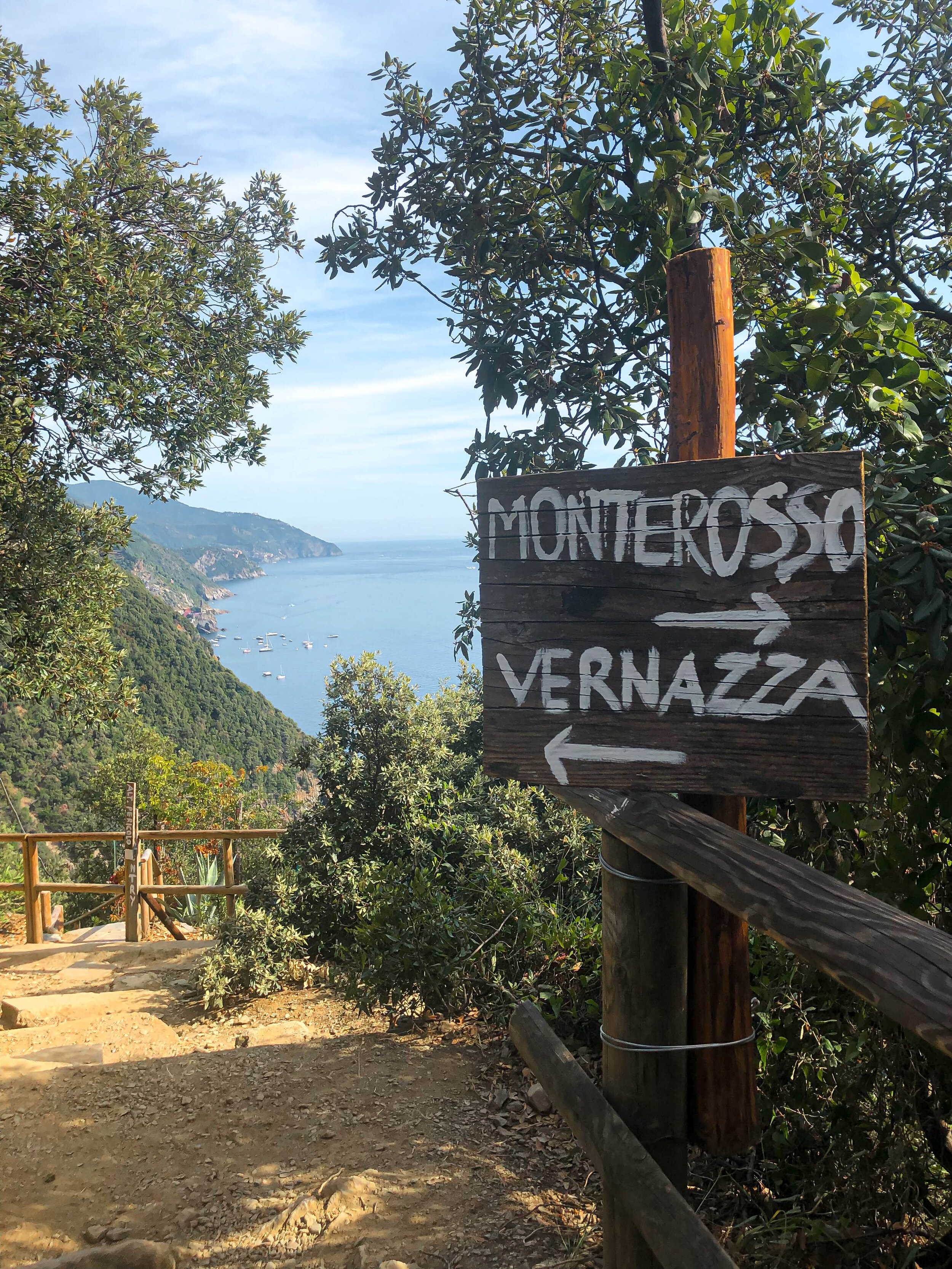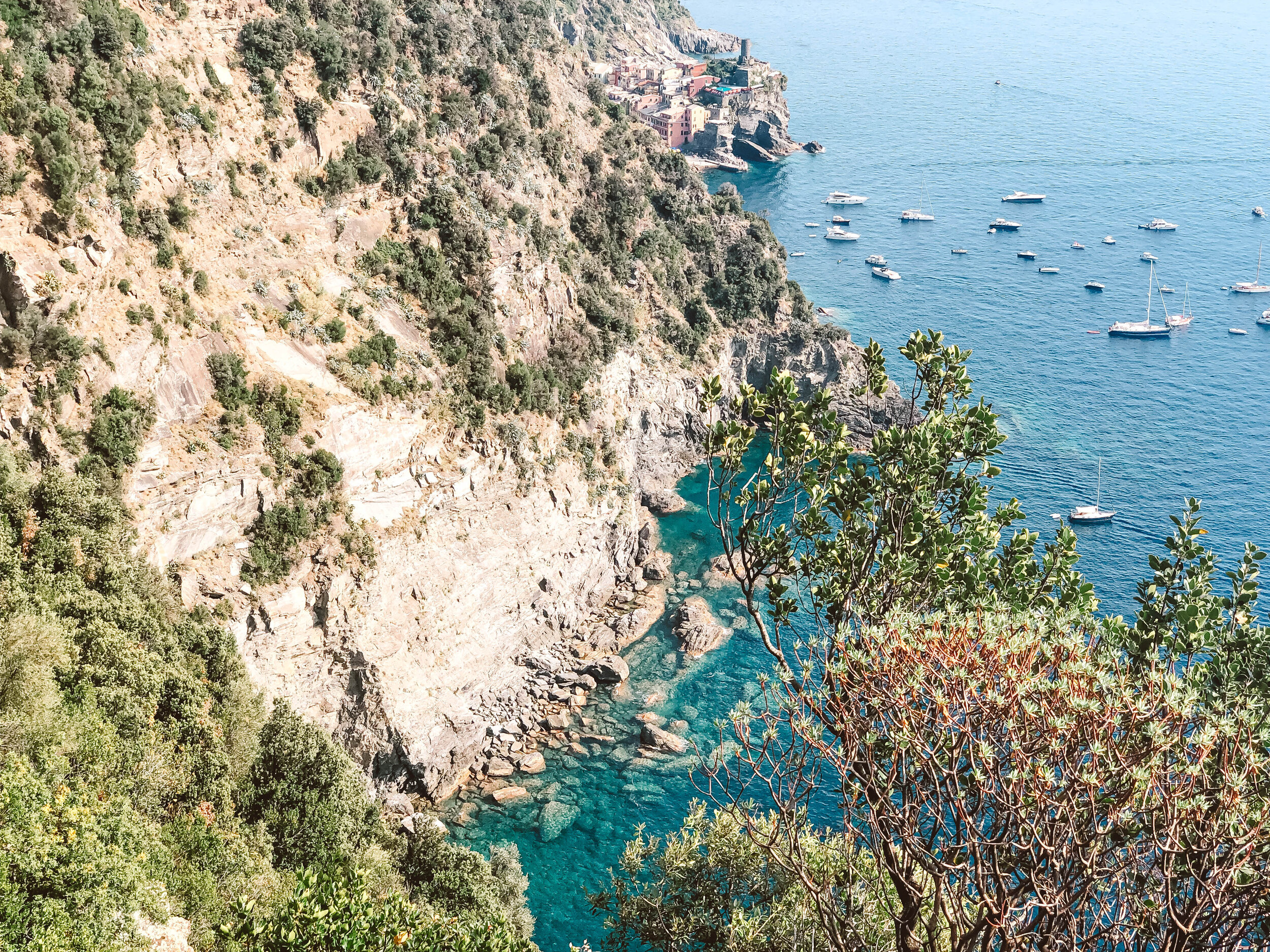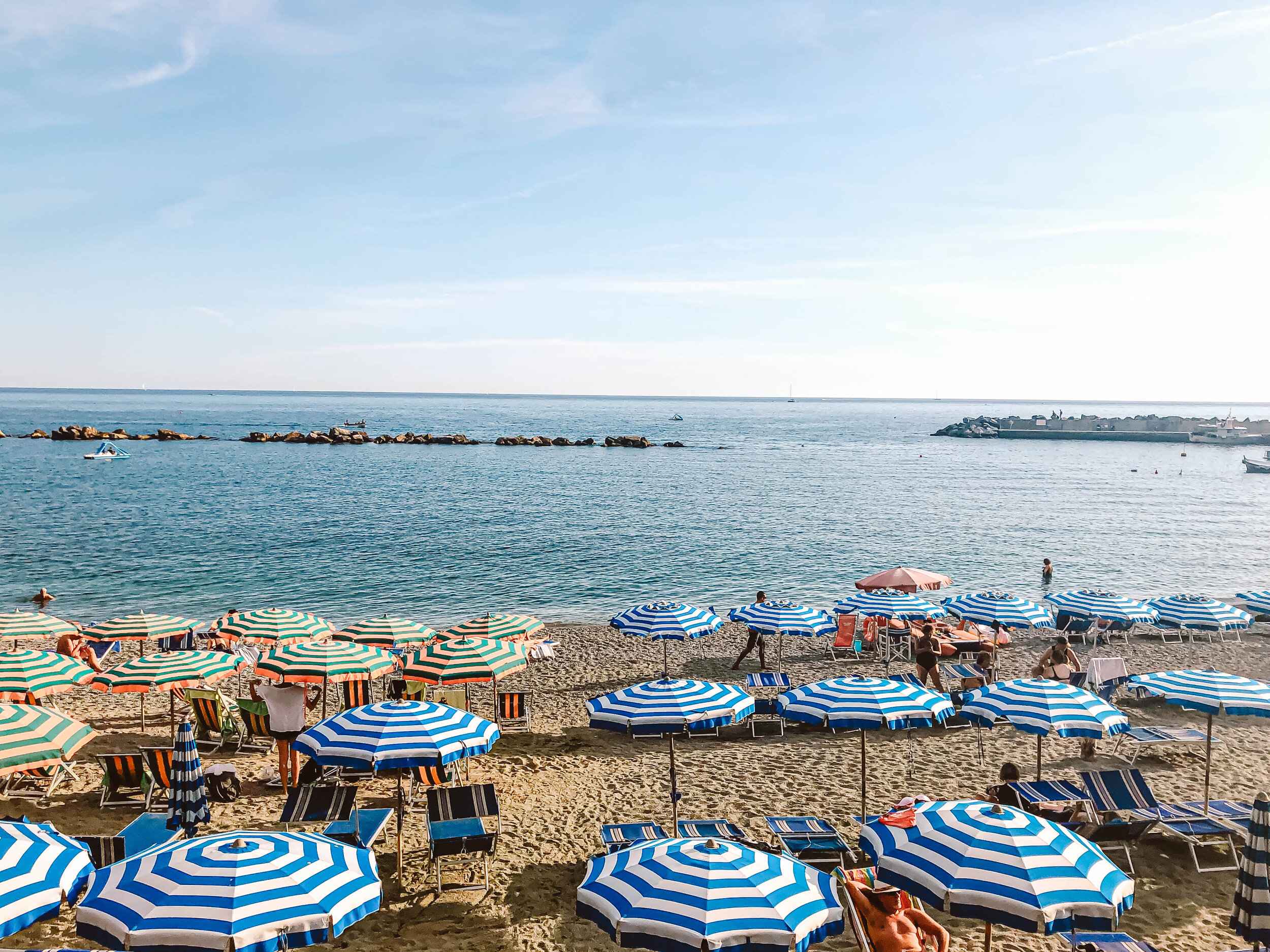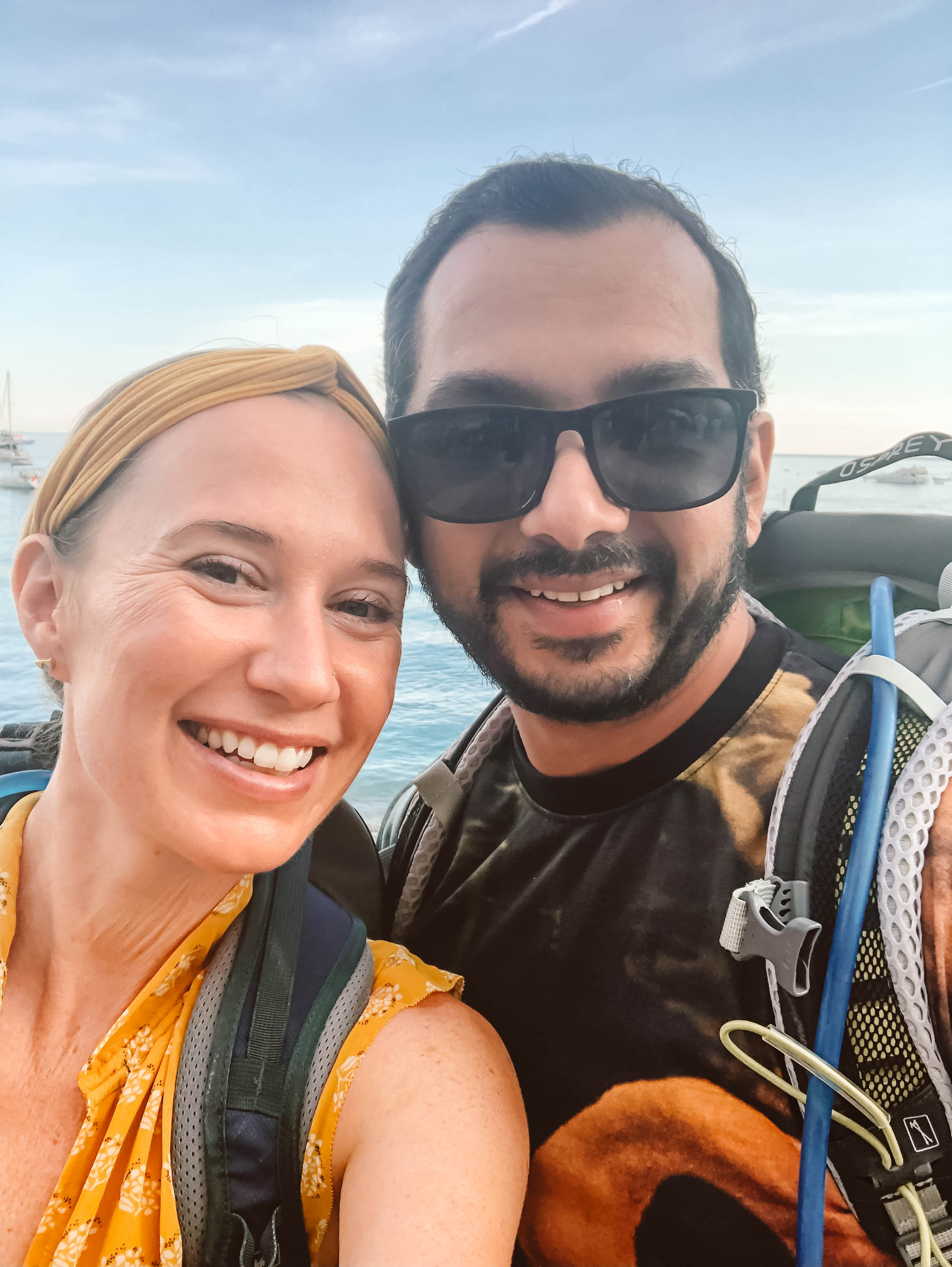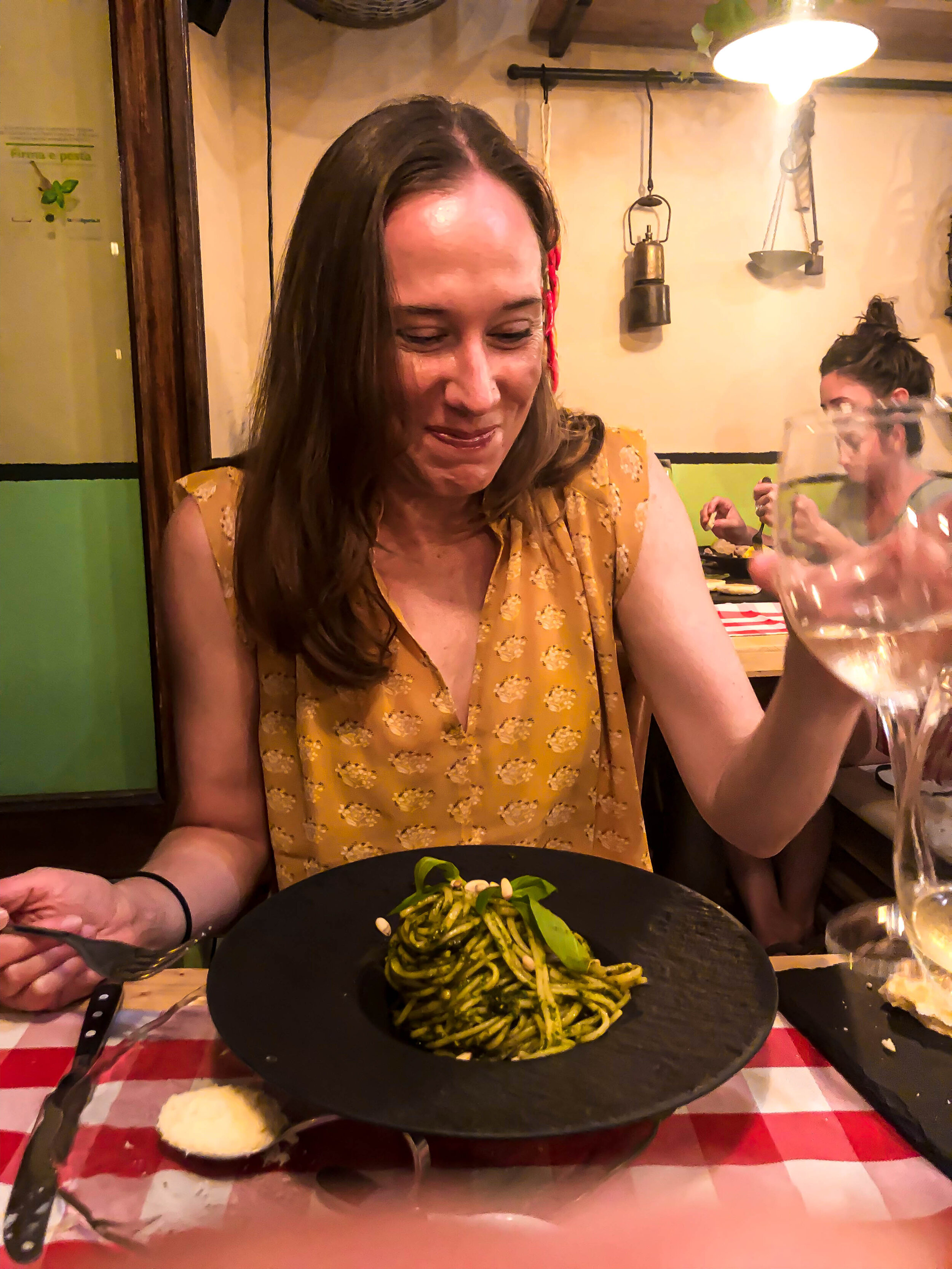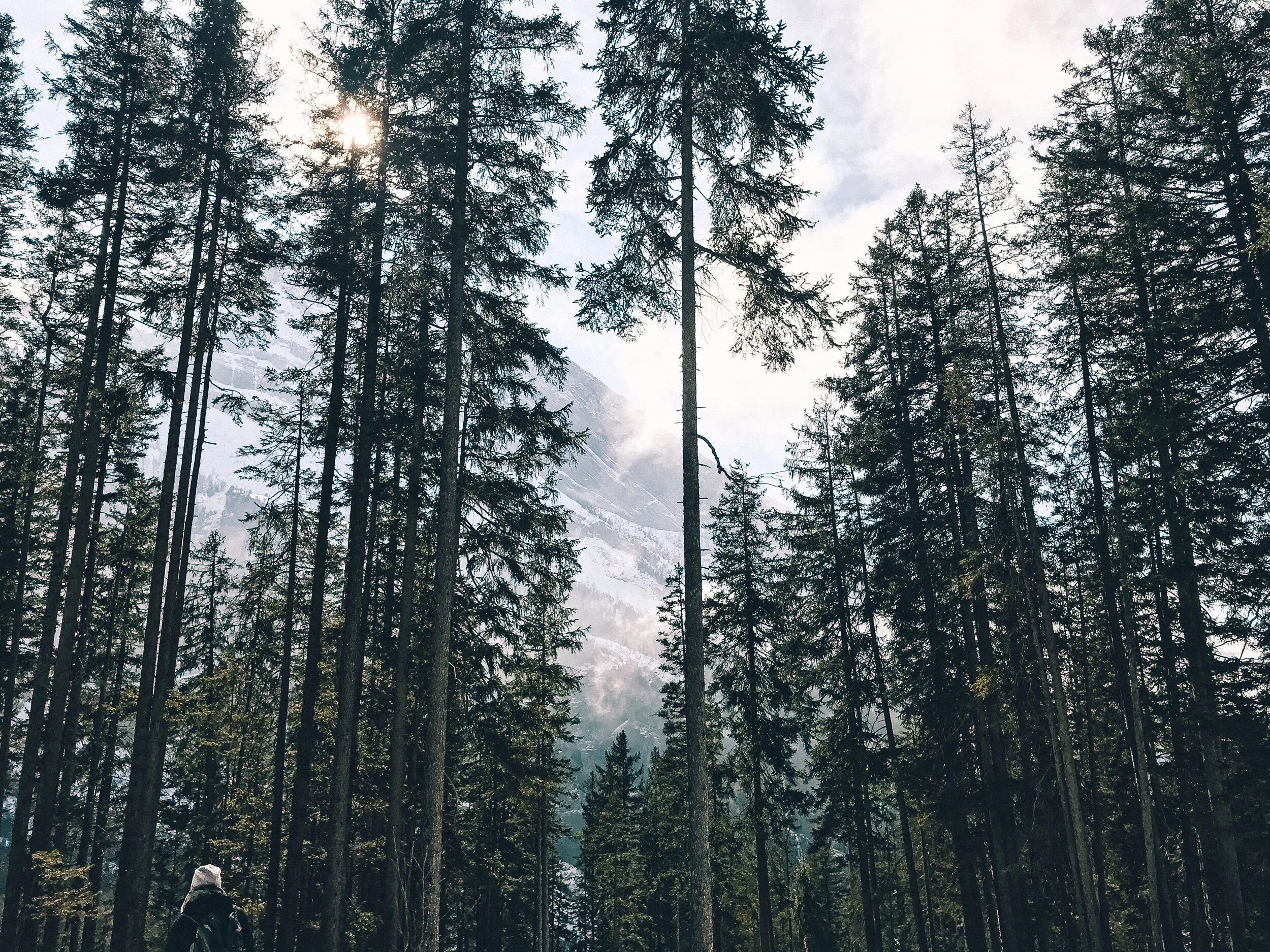A Weekend in Cinque Terre, Italy
On a whim, the Thursday before I started my first semester at ETH, Raunaq and I decided to rent a car and drive to Cinque Terre for a long weekend. It was September 2019, and we wanted one last hurrah before the work (and lack of paid vacation days) began. It still blows my mind that these are the types of spontaneous road trips we can do these days.
The drive to Cinque Terre from Zurich is about 5-6 hours. Since we were leaving late Thursday afternoon, we decided to split the drive and stay overnight in Saronno, a tiny town south of Milan that we literally picked off the map. There isn’t that much to say about our night in this town, except for two things: 1. We rather terrifyingly found ourselves in a Nazi/Confederate bar, and 2. Once we hightailed it out of there, decided to take back the night by going next door to the town’s karaoke bar. I sang a near-perfect and highly-under-appreciated rendition of Baby Got Back by Sir-Mix-a-Lot, which only served to impress Raunaq and the DJ. The rest of the Italians in the bar were very eager to get back to their ballads. Everyone in European karaoke bars think that they are contestants on the Voice. We left Saronno the next morning, and made it to La Spezia (the main town near Cinque) by 11am.
A bit about Ligurian specialities
But first, let’s take a quick detour to discuss Ligurian cuisine. Cinque Terre, La Spezia, and the surrounding areas are part of Liguria, a coastal region in northwest Italy that stretches from Tuscany to the French border. Mountains to one side, the turquoise sea to the other. This area of Italy is responsible for producing a veritable cornucopia of delicious delights. All of the very best things, in one place. Liguria won the food lottery. And trust me, you are going to want to try them all.
First off - pesto. Basil grows like weeds in the region. Liguria’s capital is Genoa, so welcome to the birthplace of classic genovese pesto. It’s sold everywhere, slathered on everything, and so impossibly bright and fresh you’ll never be able to look at pesto the same. Even the generic jarred stuff you can find at the grocery store just tastes better in Liguria. Lots of places will serve pesto with trofie, a small, corkscrew-shaped pasta that soaks up all the sauce into its little nooks and crannies. At the western end of Liguria, delicate and sweet Taggiasca olives are pressed into a rich, fruity oil. Grapes grow on the terraced mountains near Levanto and Cinque Terre, and the vineyards are so steep that most of the work is still done by hand. The local Sciacchetrà was a little too sweet for my taste, but the crisp Vermentino was delightful, like a zesty Sauvagnion Blanc, and we drank it for pretty much for every meal - and brought home bottles to share. In fact, I may or may not be drinking a glass now as I write this post.
It’s hard to turn a corner without seeing or smelling slabs of freshly baked focaccia, glistening with olive oil and flaky sea salt. Simple and perfect. And then there is the farinata. How many ways do I love thee, farinata? It’s described in a lot of different ways: a chickpea tart, an unleavened chickpea pancake, a close cousin of focaccia - and nothing really quite captures it. But what you need to know is that it is made from chickpeas, baked in a hot griddle pan so that the edges get all golden and crispy but the inside is still somehow a bit creamy, sprinkled with salt and cut into slices. Best eaten hot, with pesto, for breakfast.
Ok, now back to the weekend.
La Spezia
While there are plenty of little hotels in the villages of Cinque Terre, we opted to stay in La Spezia, and I’m glad we did. We found an AirBnB, owned by the most adorable Italian man, that was both a 10 minute walk from the train station (with all the connections to the villages) AND near one of the best pizza places we’ve found...ever. Win win. We didn’t spend a ton of time in the town itself, but somehow still managed to eat a few places worth recommending:
La Pia Centenaria : http://www.lapia.it/ This is both a sit-down restaurant and a take-away stand. A lot of the reviews recommend the focaccia - but I say get the farinata. It’s fun to watch the guys behind the counter make all the fresh pizzas, too.
Pizzeria Farinata: The very essence of a hidden gem. It’s a bare-bones place, next to a gas station. Packed with locals, because they know what’s up. Take it to go with a bottle of wine.
Portovenere and Riommagiore
You probably have heard of five villages of Cinque Terre. But what about Portovenere? It’s dubbed Cinque Terre’s “sixth town,” but I prefer the more romantic nickname of “Golfo dei Poeti,” the Gulf of Poets. While it’s definitely not a hidden gem anymore, it has slightly less tourists than any of the other five well-known towns, with all the same features: gorgeous harbor, rocky cliffs, tangled streets, colorful buildings pressed up together, and all the natural beauty of the Ligurian coast.
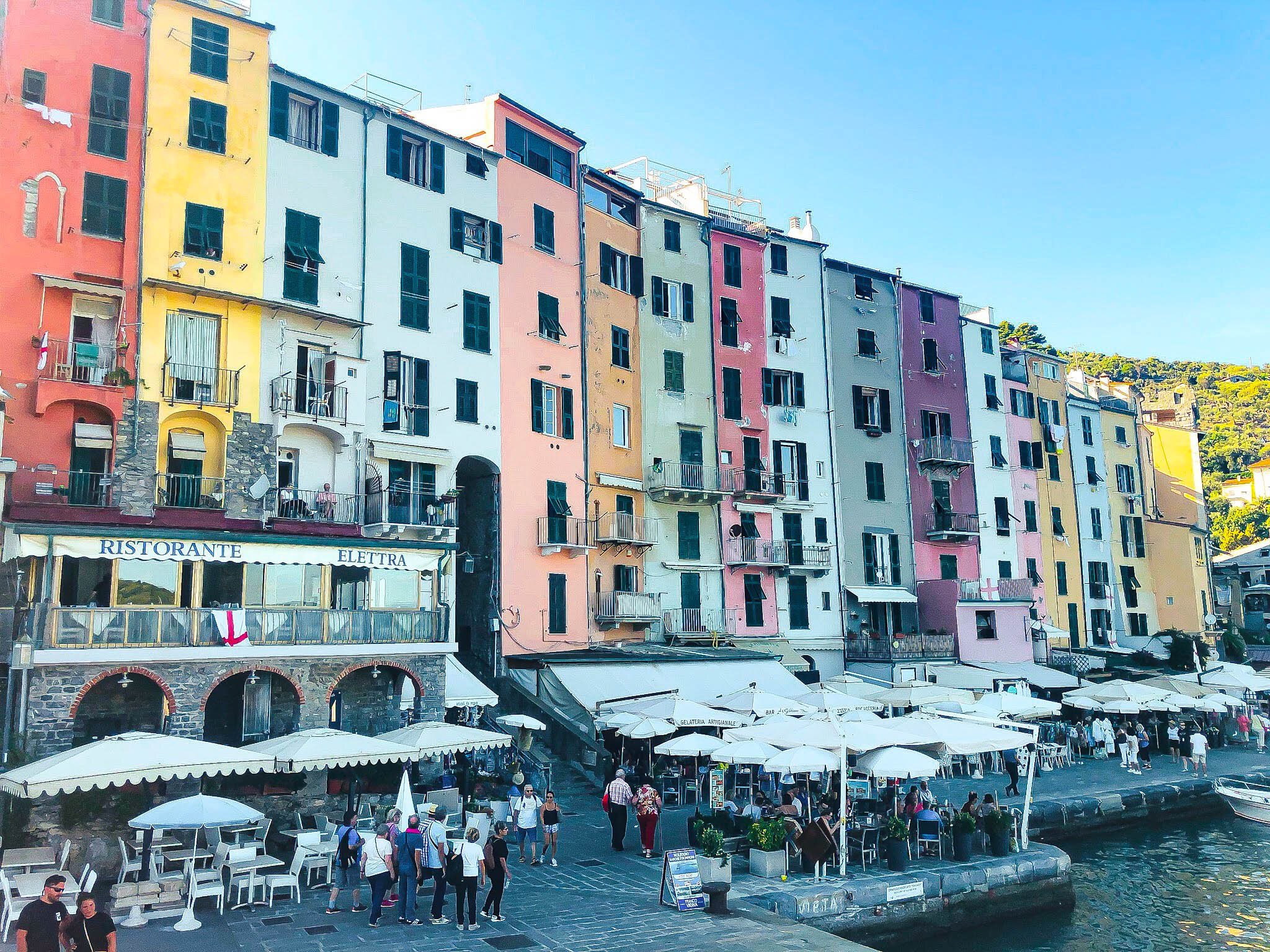
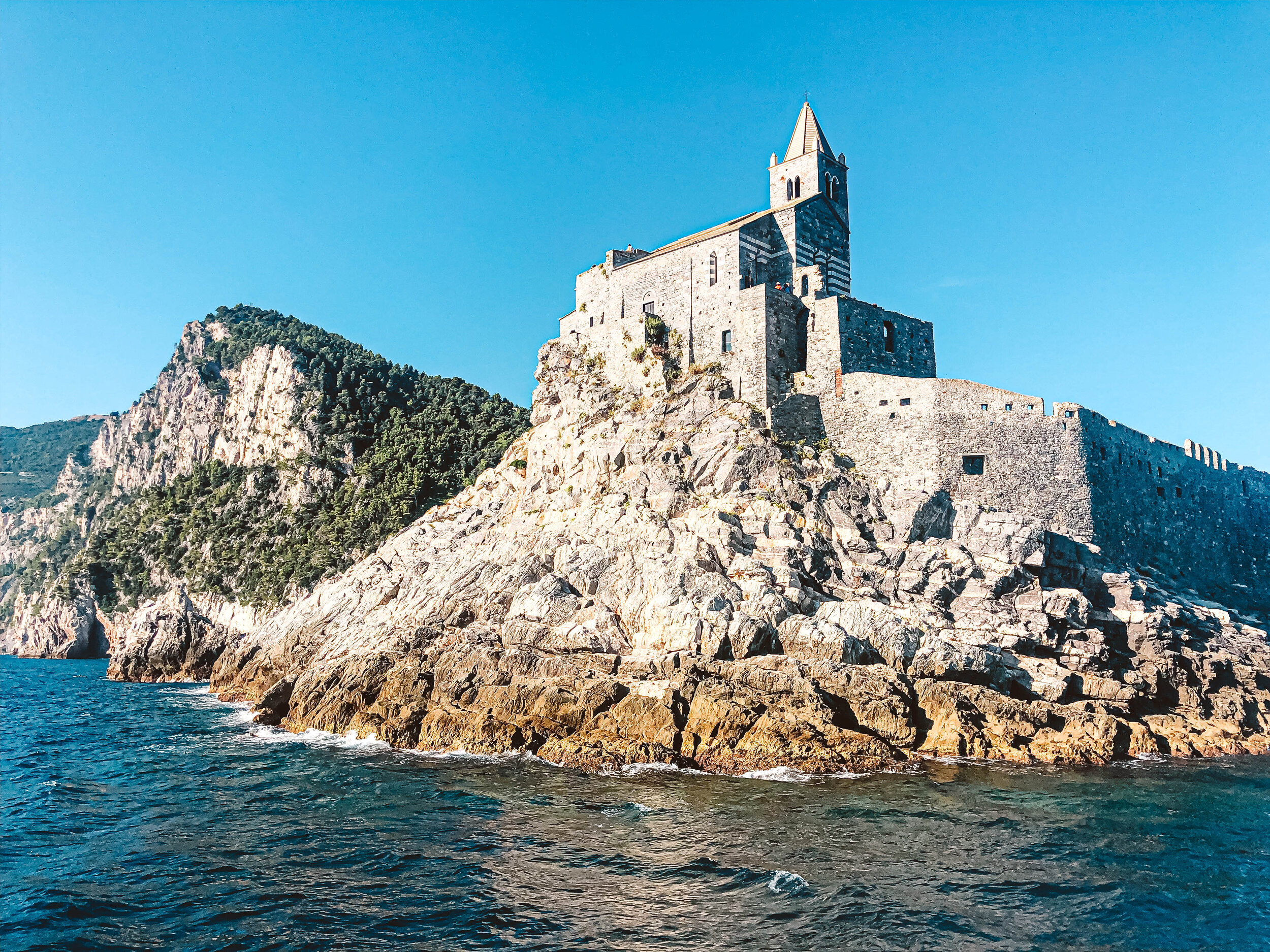
There’s no train station at Portovenere (unlike the rest of Cinque Terre), so we took a 30-minute bus ride from La Spezia, and spent Friday afternoon exploring the town. Like the other villages, there isn’t a whole lot to do besides stroll the labyrinth of tiny streets, eat, drink and swim. Which is just fine for an Italian getaway, in my opinion! The old town of Portovenere is tucked away behind the facade of colorful buildings along the marina, with tiny alleyways snaking this way and that, up hills leading up to the Castle Dorian.
Portovenere doesn’t have a proper “beach,” but there are plenty of places to jump in the water and sun yourself along the rocky promenade. Or even better, climb down the rocky steps to swim through the sea caves in Lord Byron’s grotto (behind the Chiesa di San Pietro, which incidentally has sweeping views of the coastline).
**Also - just a five-minute ferry ride from Portovenere is Palmaria, a lovely little gem of an island settled in the Ligurian Sea’s Golfo dei Poeti**
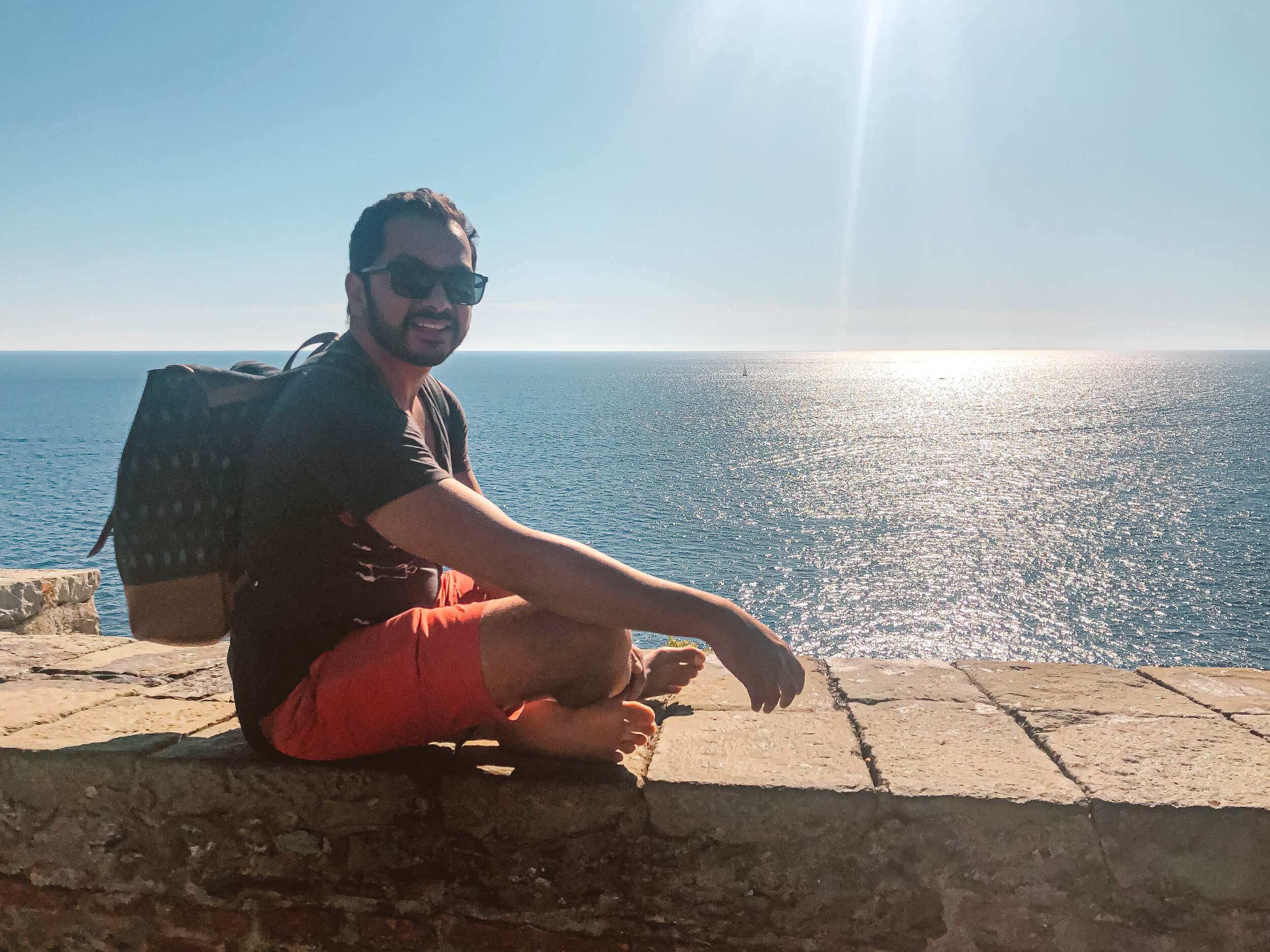
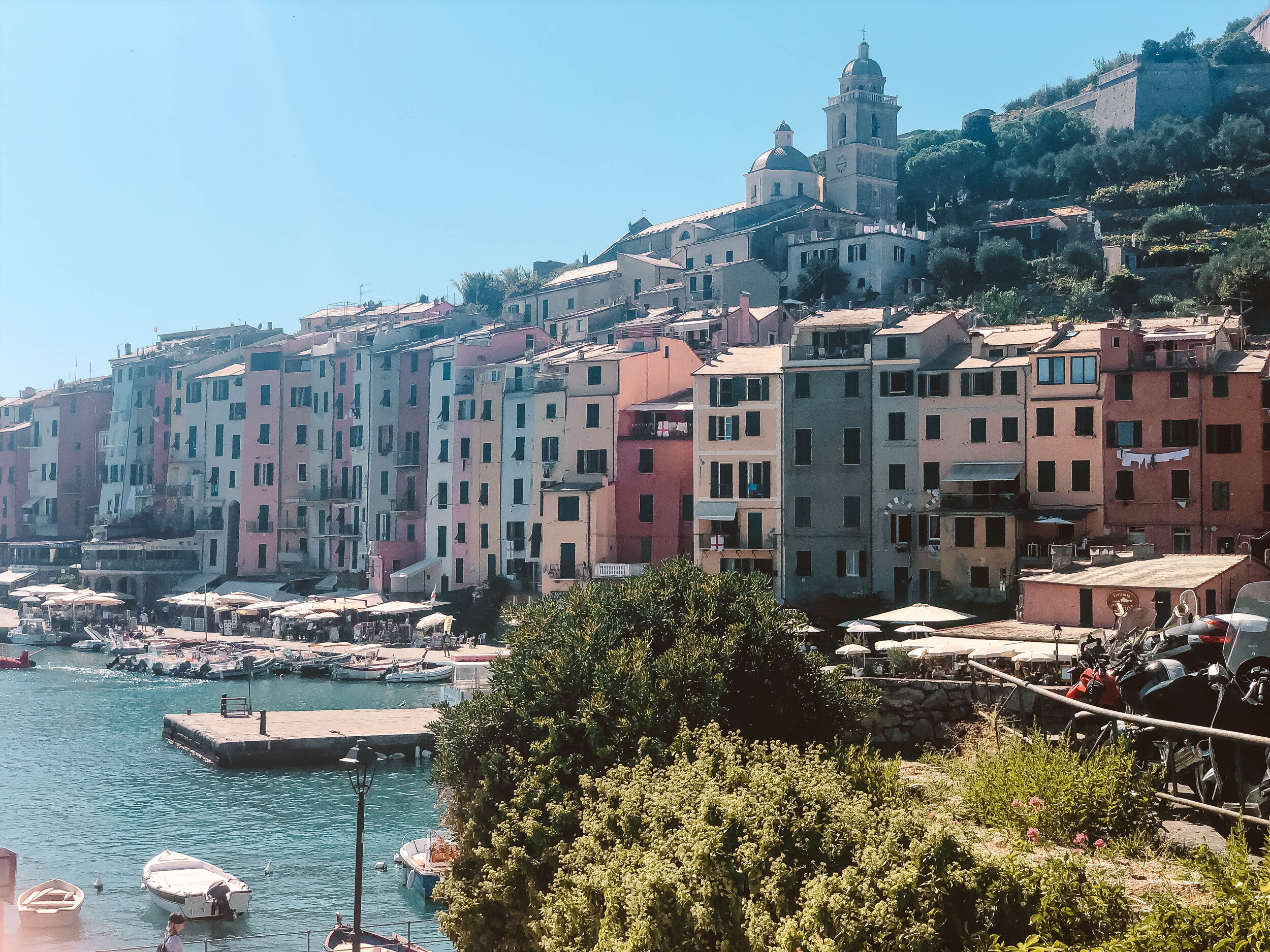
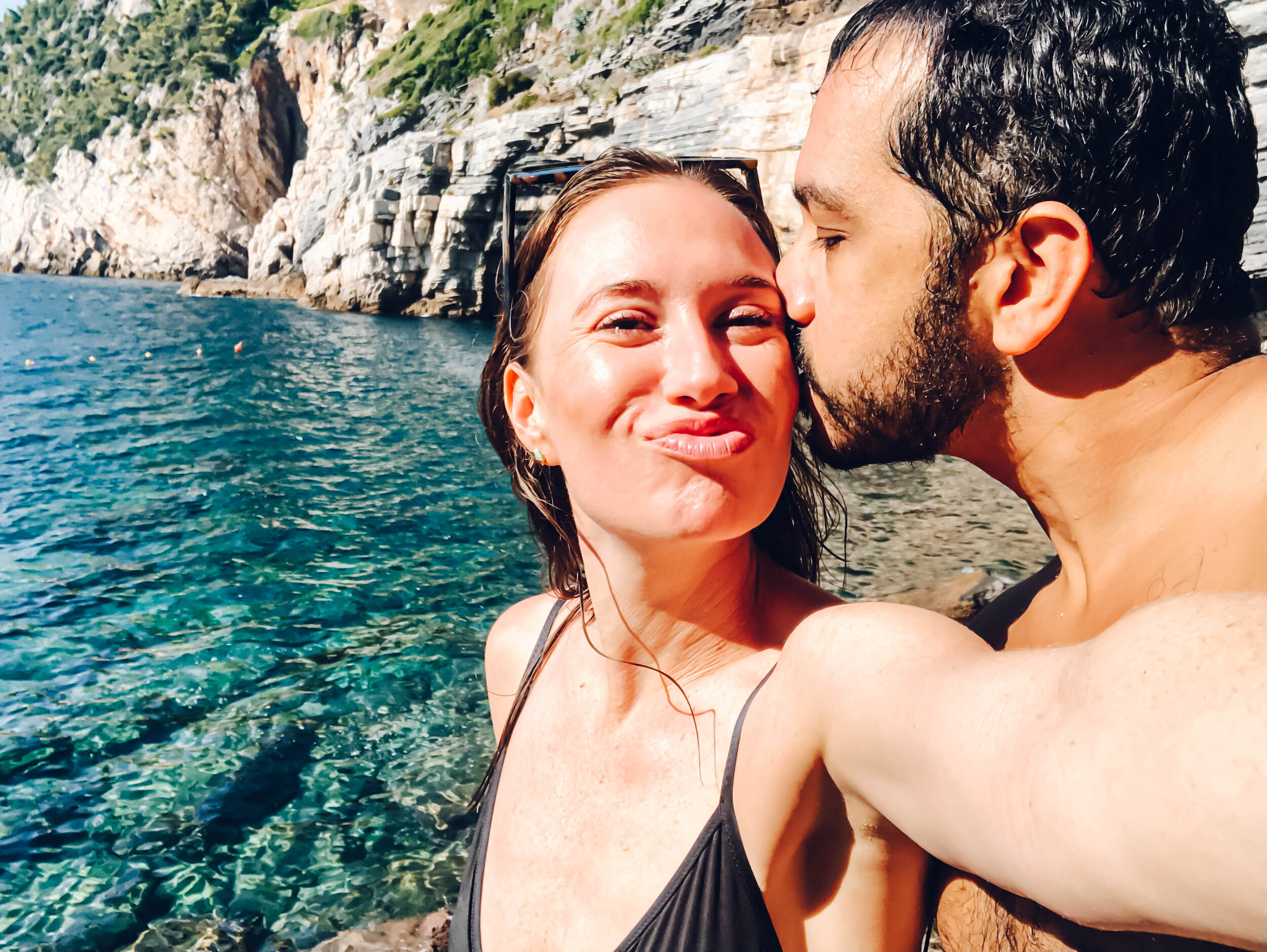
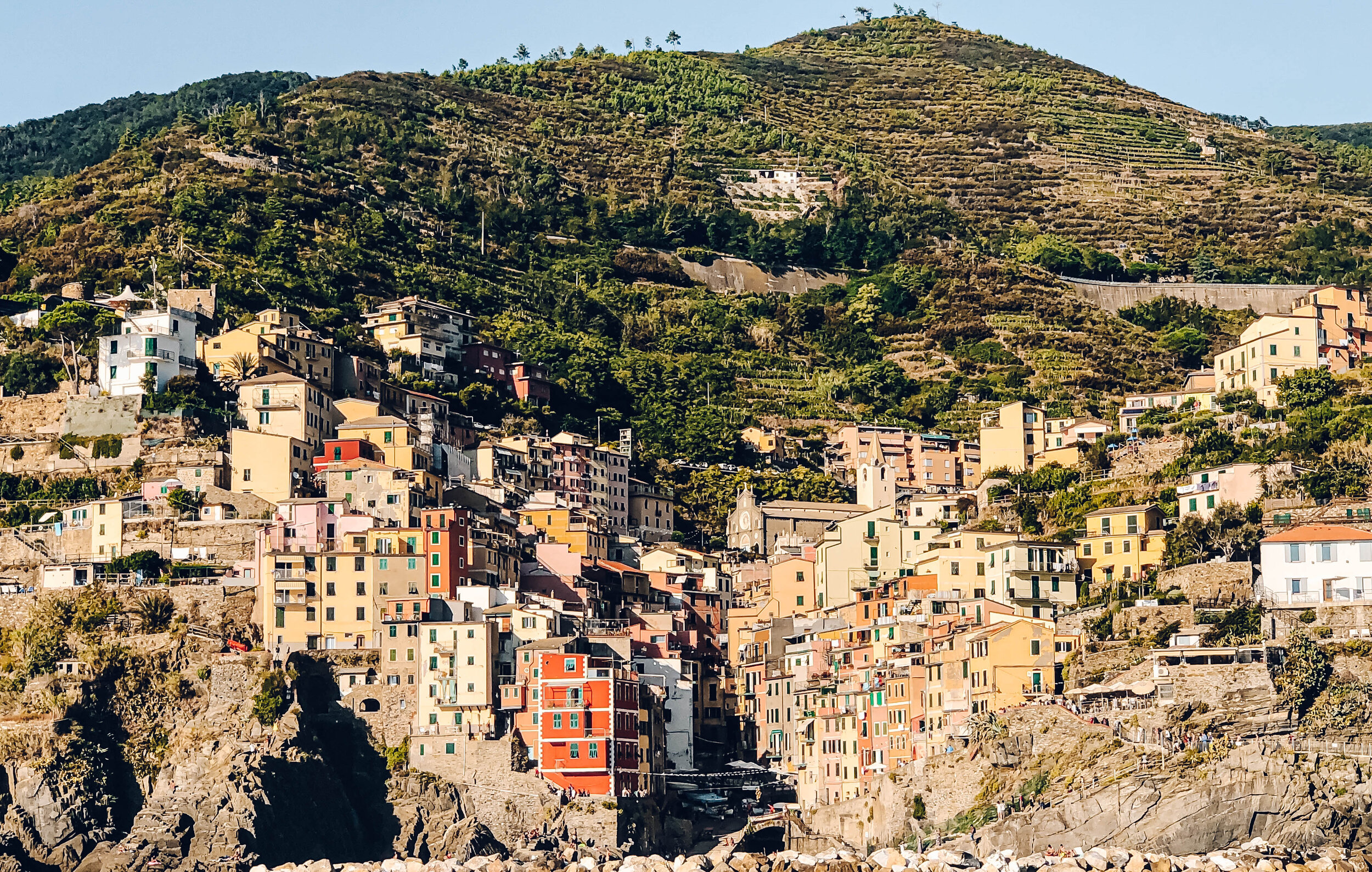
After a couple hours in Portovenere, we took the last ferry over to Riomaggiore (the ferry stops at all five towns) just in time for a cone of fried fish and the sunset. Walk up to the San Giovanni Battista church for incredible views. Next time, we’re planning to do the hike that runs from Riomaggiore back down to Portovenere. It’s 5ish hours all along the coast, and supposedly far less crowded and as equally stunning as any of the more traditional Cinque Terre hikes. Portovenere might not be a hidden gem, but a gem nonetheless.
Hiking through Cinque Terre
The Cinque Terre (“five lands”) is made up of five villages - Monterosso al Mare, Vernazza, Corniglia, Manarola, and Riomaggiore - that all cling to the Ligurian coast. And the next day, Saturday, was dedicated to hiking through them all. Hiking Cinque Terre is, in my humble opinion, the very best way to experience this area. The five towns are all impossibly quaint, but the tiny streets are simply not built to handle the overwhelming crowds of tourists that visit every day. Hiking to each one gets you up and away from the crowds, but since the trails go through all five, you can still get a feel of the distinctive flavor of each village. By far the most popular trail is the “Sentiero Azzurro,” the Blue Trail. A couple sections of that trail were closed, however, so we created our own route by linking together a couple different trails (see below for details on the three sections we hiked). Be sure to check the Cinque Terre website for trail status reports and weather updates before you set out, especially any time after heavy rains.
You can hike these trails in either direction, but I recommend starting from Riomaggiore or Manarola, so you can end at the beaches of Monterosso for a well-deserved swim. All of the towns have ocean access, but Monterosso has the largest “beach” area, along with paid changing rooms and showers. Keep in mind that all of these towns are connected by train (and are just a few minutes’ ride apart), so it’s easy to skip a section if you are running low on time or energy. Most of these trails are exposed and the sun is strong, especially mid-afternoon. Each town will have public fountains with drinking water, so make sure to fill up at every stop.
Cinque Terre is a national park, so you’ll need to buy a hiking ticket beforehand to do any of these trails. Depending on your plans and where you are staying, you can get a simple hiking ticket, or a ticket that includes train travel as well.
Our route:
Part 1: Manarola to Corniglia on “The Path of the Vineyards”
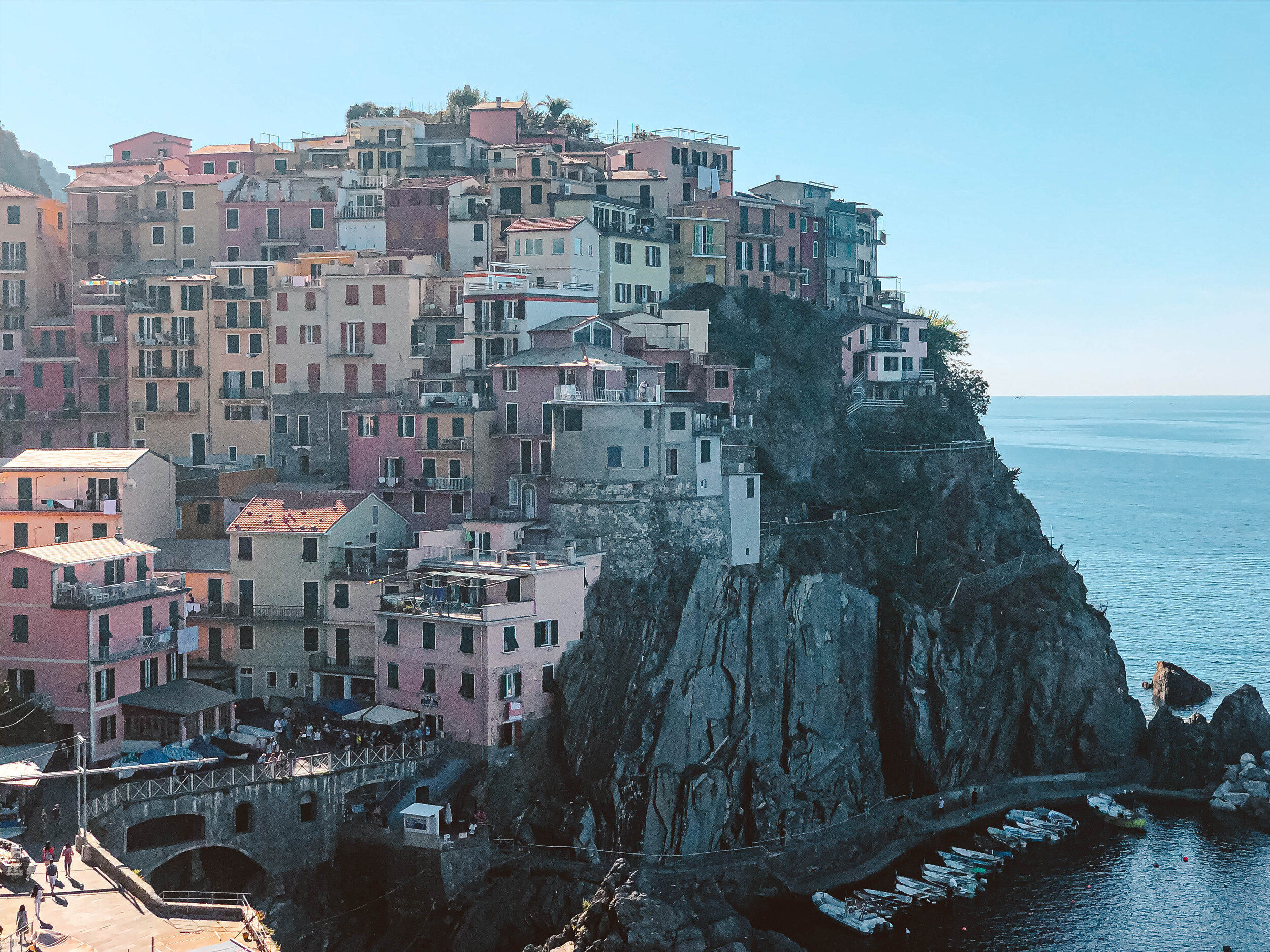

We took the train from La Spezia to Manarola to start our hike. But first - we picked up fresh, crispy slices of farinata smothered in pesto from a stand in town, and sat at the waters edge to eat breakfast. Oh my stars, that pesto. I could wax poetically about the pesto for paragraphs...but I shouldn’t, because we have a hike to get to! It’s a little bit confusing to find the “trailhead,” but just walk uphill through the village (not the path along the water), until you find the start of Trail 506. Most of the time, the trail numbers will be painted on the side of buildings. You’ll know you’re on the right track when you start going up lots and lots and lots (and lots!) of steps.
It’s exposed, hot, and stunning, winding up and through the sun-soaked Ligurian vineyards with magnificent views of the sea. This trail was steep, and the most difficult, but my favorite section. It’s a little tricky, but the general path is: Manarola - Groppo - Volastra - Corniglia.
Total time and distance for Part 1: 2.5 hours, 5-6 km.
Part 2: Corniglia to Vernanzza on the “Blue Trail”
We stopped in Corniglia for a quick wander through the town, and a beer and pesto focaccia (and no, this will not be our last pesto of the day) before setting out for Vernanzza. This section is high along the cliffs, with incredible views of the sea and tiny little inlets below.
The cliffs are dramatic, the colors of the water absolutely extraordinary. We were so high up that the fisherman’s boats looked like tiny toy dinghys. After about an hour, Vernanzza comes into view, with a spectacular birds-eye view of the grotto and the pretty little port that juts out below the village.
Total time and distance for Part 2: 1.5 hours; 4 km.
Part 3: Vernazza to Monterosso on the “Blue Trail”
Up until this point, the trails were relatively empty. This section, though, is by far the most popular of all the trails, so it’s probably where it will feel the most crowded. We saw lots of tourists hiking in sandals with no water, which seems insane to me, given the trail conditions and the heat (don’t be like them!).
This part of the trail has a little bit of everything - ocean views, hills with olive groves and citrus groves and terraced vineyards, shaded forests, lemon trees, and even a couple of accordion players for that extra flair. All the classic Italian flavors.
There are lots of steep sections and stairs, and I was feeling a little drained by the end of this last section. Which was perfect timing, because the trail ends right at the beach in Monterosso, and nothing feels as good as that first plunge in ocean water to rinse off all the sticky sweat. Nature’s shower (*but since Monterosso is a proper beach, they also have showers and changing stations*).
Total time and distance for Part 3: 2 hours; 3.75 km.
It’s a long day of hiking (plan for at least 6 to 7 hours of hiking if you are going through 3 or more villages ) - but it is so worth it. Highly, highly recommend.
After a couple hours of swimming and sunning, we changed and explored Monterosso a bit before going to dinner. I had my heart set on Da Eraldo, and even though there were no reservations available, we were told if we showed up right when it opened at 7pm we might have a chance. And what do you know - it worked! The ambiance was so charming, and the food was (insert chef’s kiss emoji here). Pesto dish number three of the day was the very best of all. You might get lucky with a last minute table, but I’d make reservations if you can, just to be safe.
“Fare la scarpetta” is the Italian phrase for using a little piece of bread to mop up leftover pasta sauce that’s too good to leave behind on the plate. Which is the perfect way to describe how I feel when I’m in Italy. Savoring every last delicious bit of it. We were doing a lot of that this weekend in Cinque Terre. But I’m really trying to bring this same attitude to everyday life, too. Let’s all ‘fare la scarpetta’ a little more, eh?
Travel Tips
If you are planning to hike, absolutely check the trail status on the website beforehand: http://www.parconazionale5terre.it/Esentieri-outdoor.php
You can buy your Cinque Terre card at the La Spezia train station, but it’s also very easy to buy it online in advance. Depending on your plans and where you are staying, you can get the one without transit (“Trekking Card”), or the pass that includes local train travel (“Treno Card”): http://www.parconazionale5terre.it/Ecinque-terre-card.php
Trains run back to La Spezia pretty late, until about 11pm. Link to the Spring 2020 train timetable: https://cdn.cinqueterre.eu.com/images/stories/Cinque-Terre-train-timetable.jpg
Bus: There are no trains to Portovenere. If you are staying in La Spezia, take the 11/P bus line which runs along the shore road to Portovenere. The stop is close to the main outdoor market (not the train station). From La Spezia, the trip takes about 35 minutes, and it's a “codice 3” ticket. You can buy tickets at any tabacchi or newsstand. Don’t forget to validate them once you board the bus!
Update from a second trip to this area:
Hiking the Portovenere-Riomaggiore trail: a little wilder, a little more complicated, but with all the stunning views you’d expect from the Ligurian coast. We really loved hiking it. It’s hard to find good information online, and what is available is a bit contradictory. Some said it was 9km, others 12km, some said it was easy, others warned of treacherous sections. So until I get a blog post up, here are my tips:
The trail directions: Portovenere-Muzzerone-Campiglia-Telegrapho-Madonna di Montenero- Riomaggiore. It’s about 15km, 750 m up/down. Plan for at least 4-5 hours of hiking time.
The second half of the Portovenere- Campiglia stretch, starting after Muzzerone, is the most technical. There are a few very short sections where the rocky trail is exposed (I’d say a T3+ by Swiss standards). Rain would increase the difficulty significantly.
The stretch from Campiglia to Telegrapho is a bit boring, but enjoy the shade and flat trail!
The final section from Telegrapho to Riomaggiore is a long descent through vineyards and down a million stairs, but the view into the town and along the cliffs is glorious.
I’d recommend starting in Portovenere. The first uphill section is STEEP (like, so steep), but the uneven rocky trail would be even harder to do going downhill.
Download a GPS map of the trail if you can, as it’s not always well-marked.
So, to do this hike?! If it’s your very first time in this area, I’d still recommend the classic hike through the five villages. It’s popular for a reason! But if you want something different, or less crowded, or a little more adventurous…this trail was a real dream.

